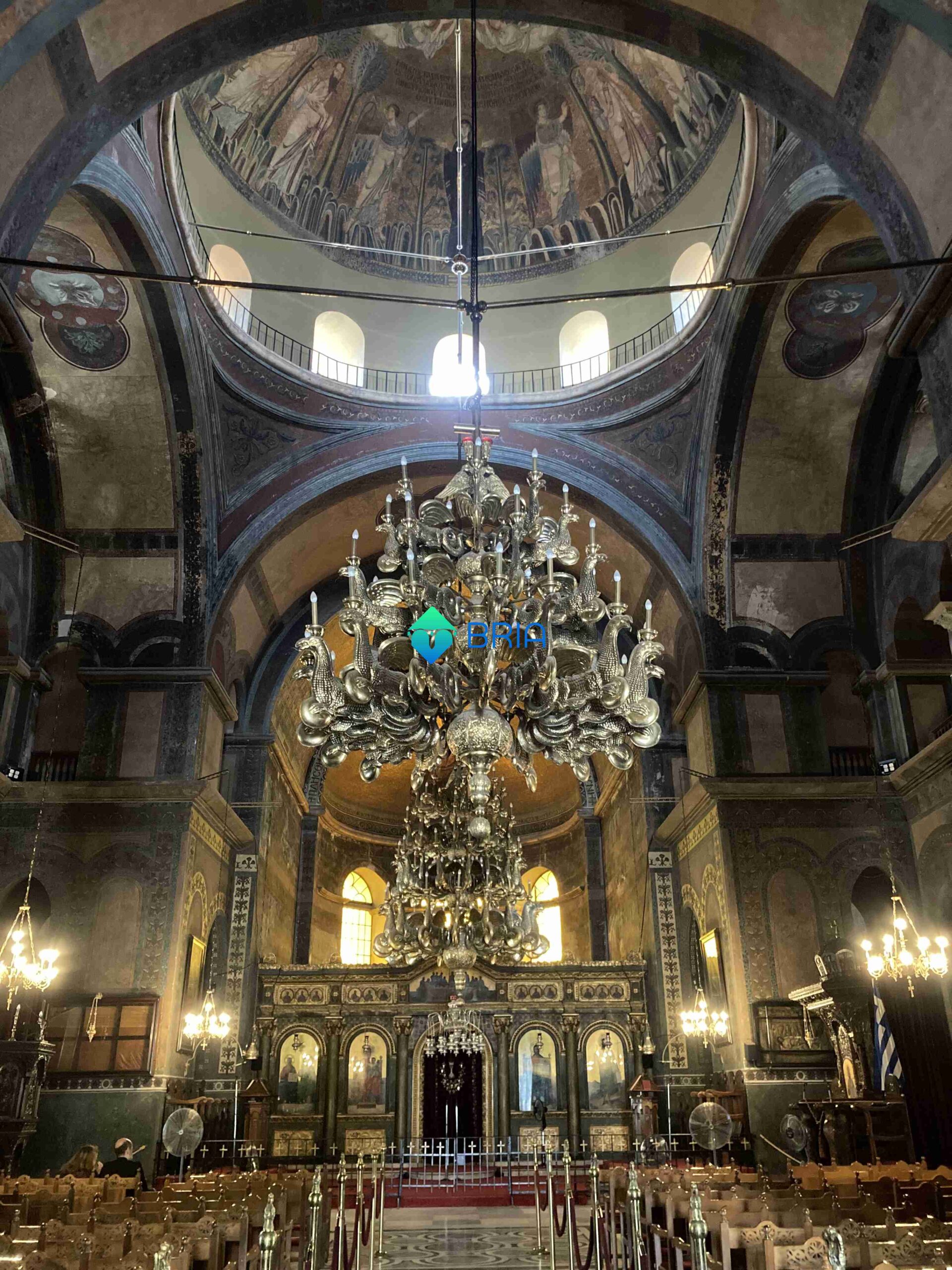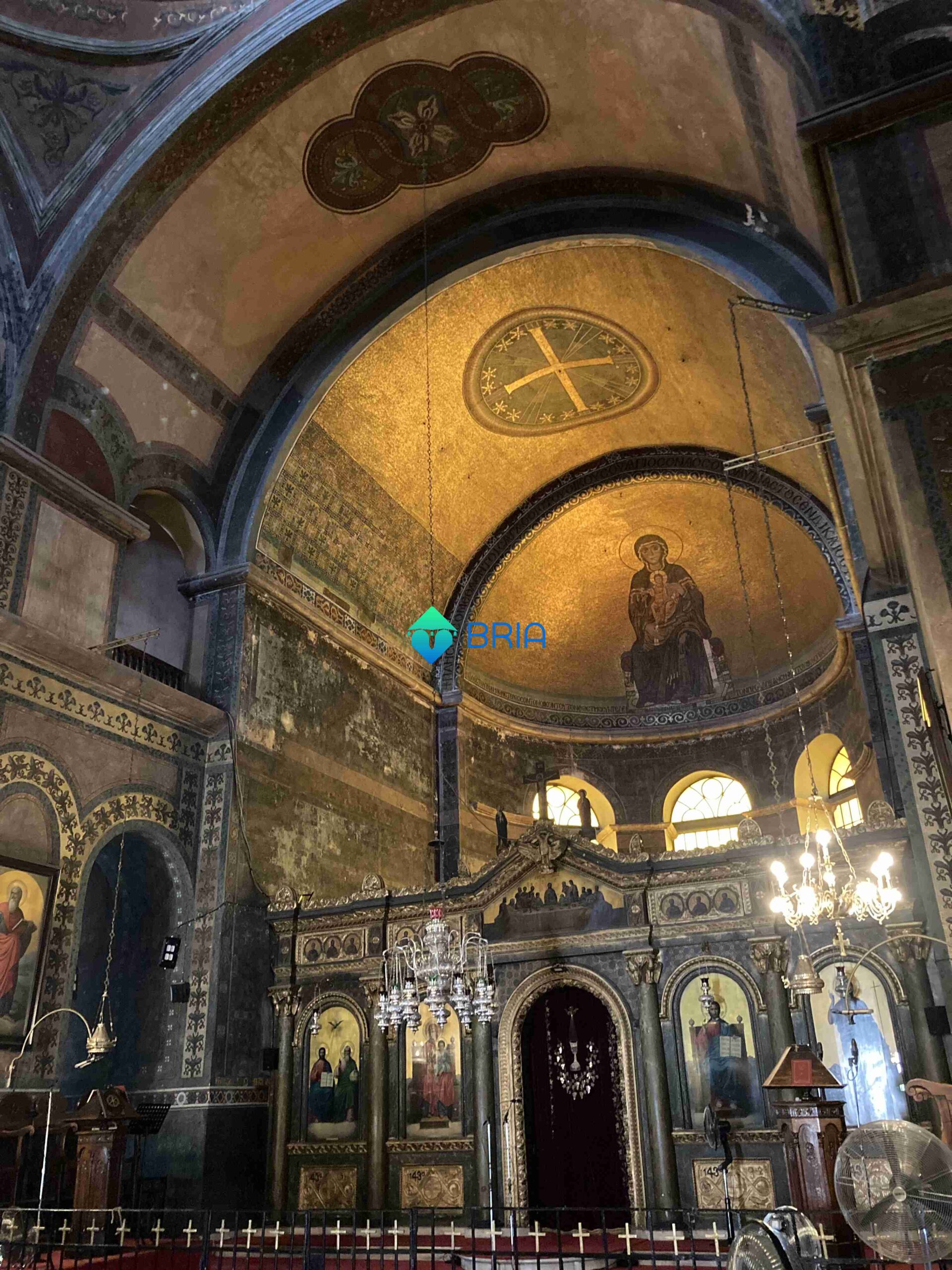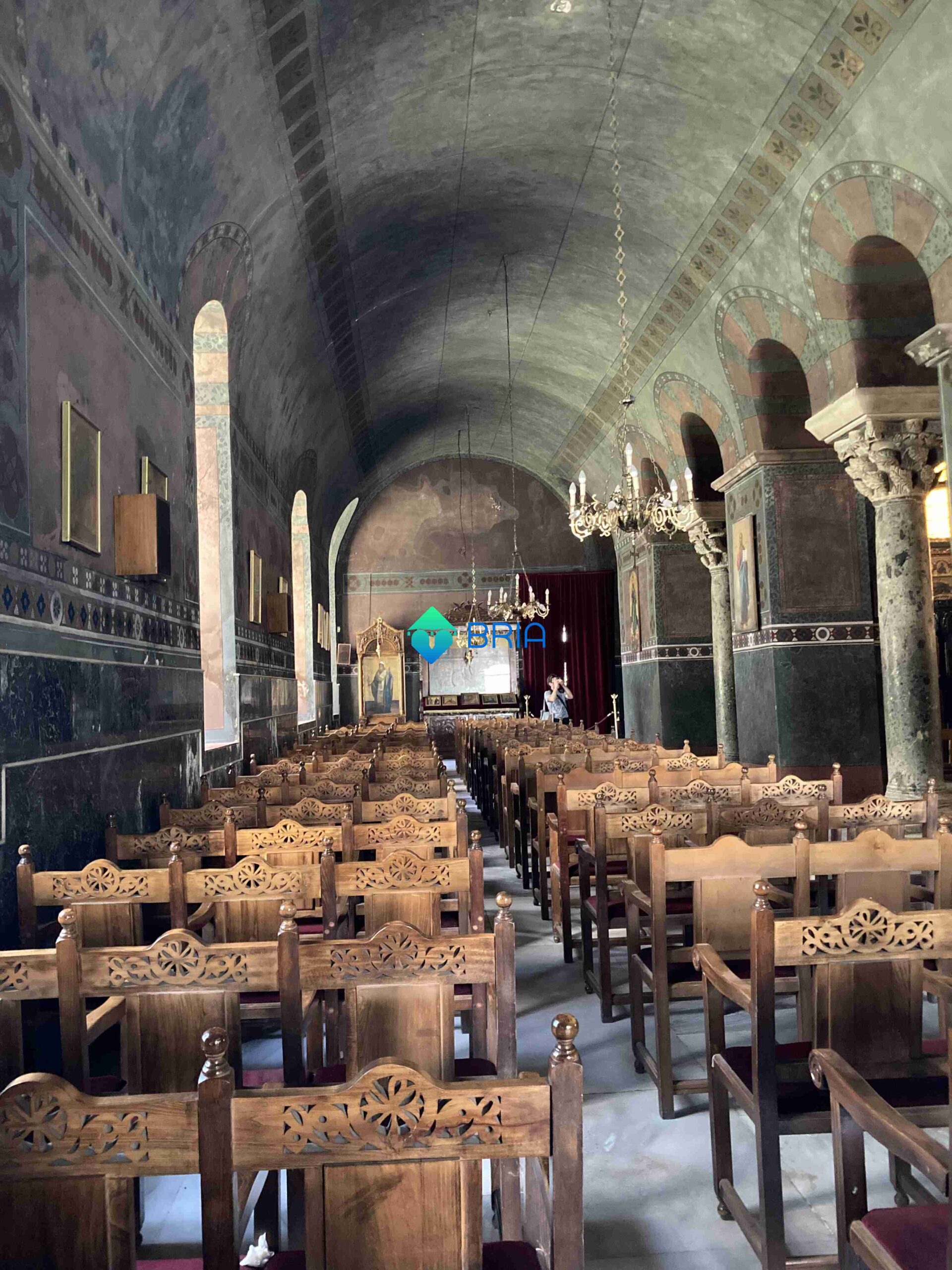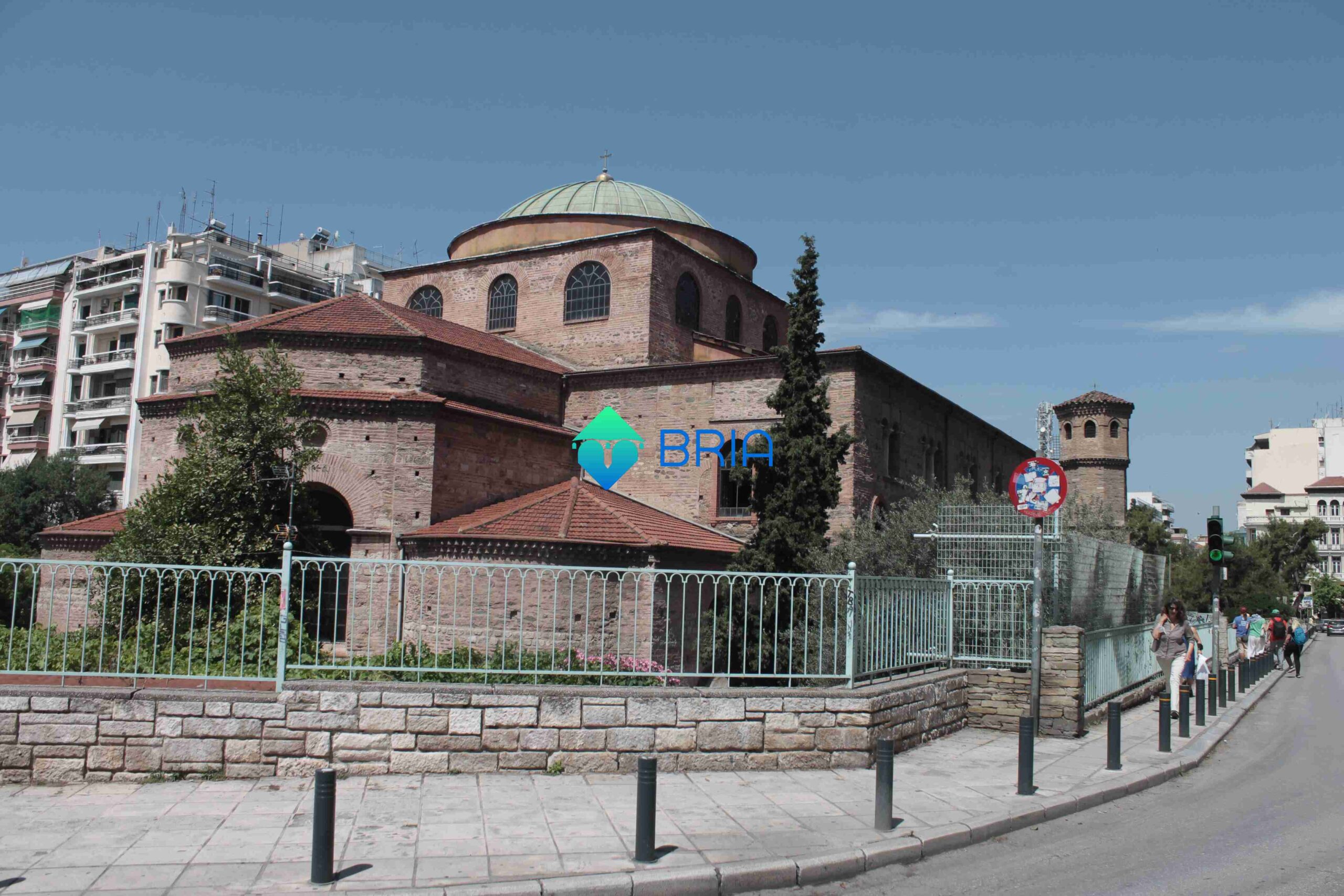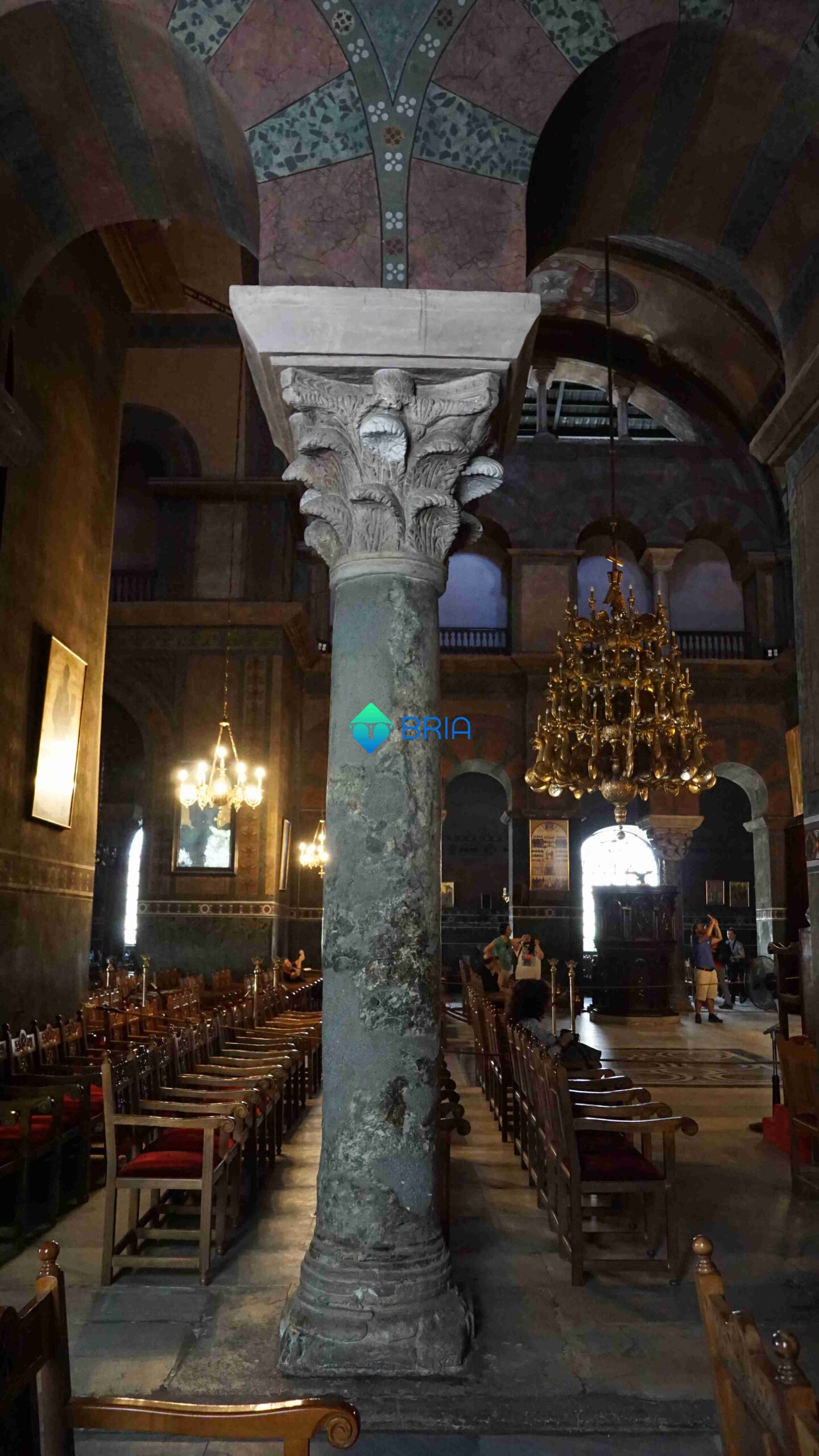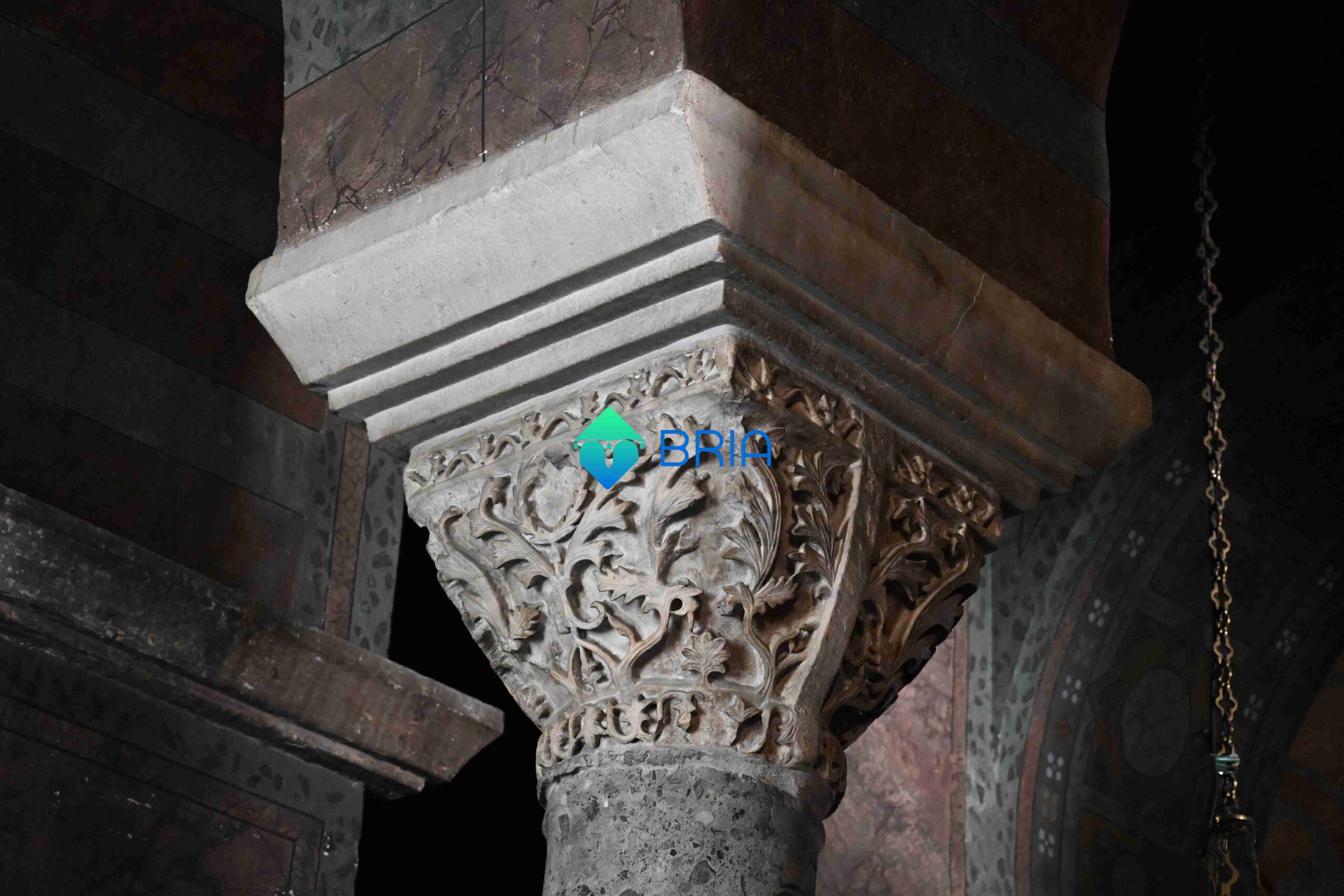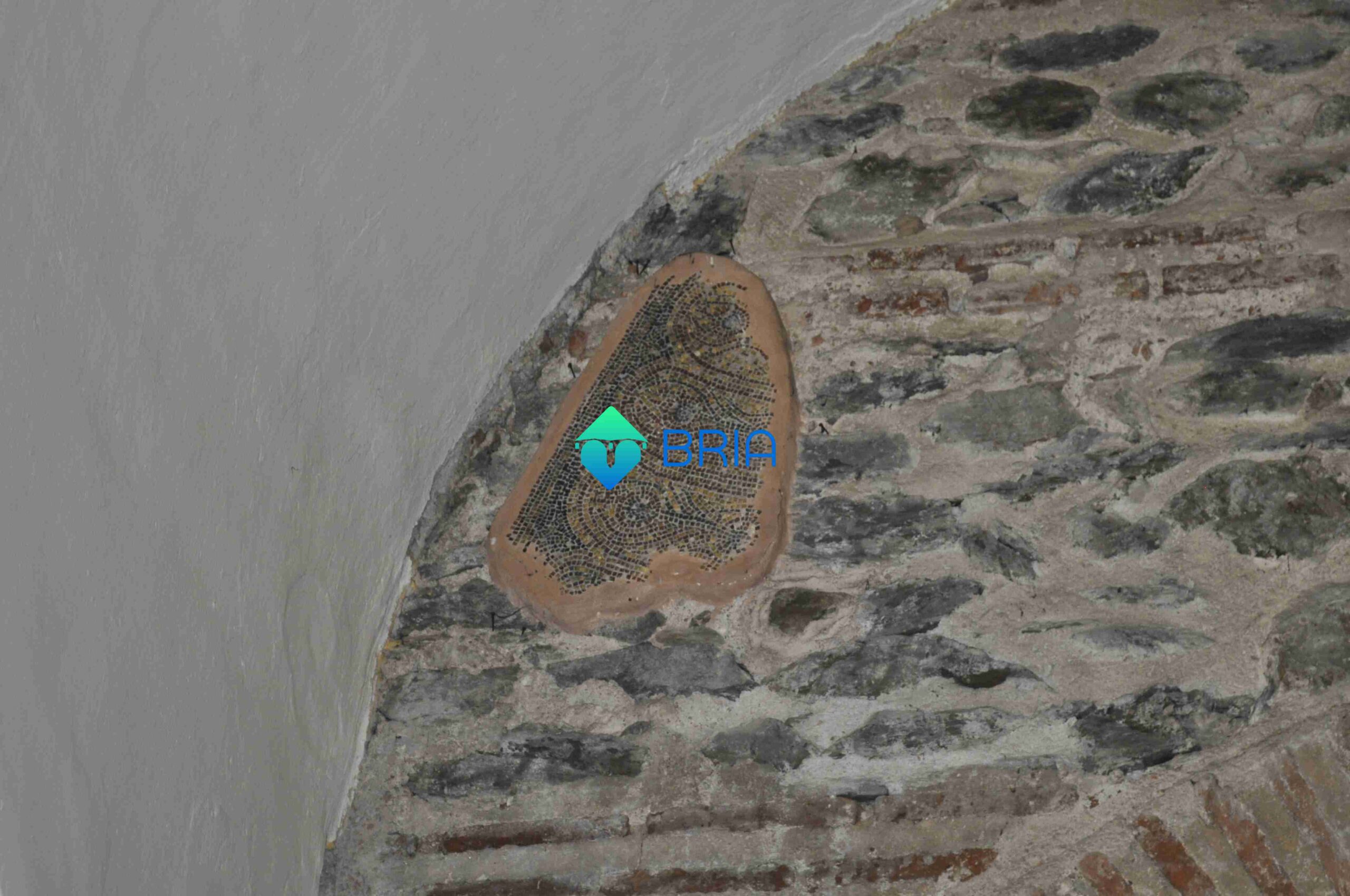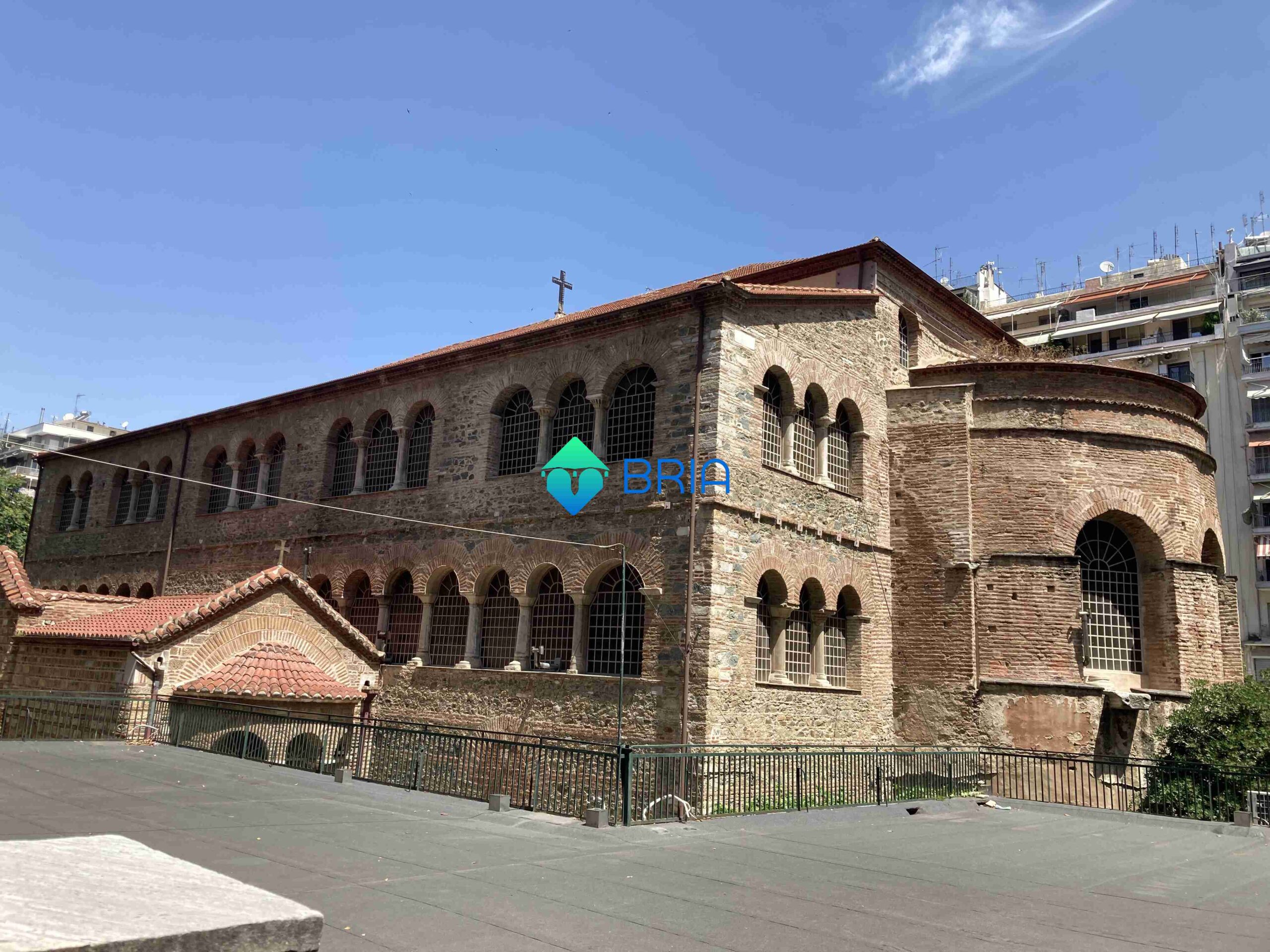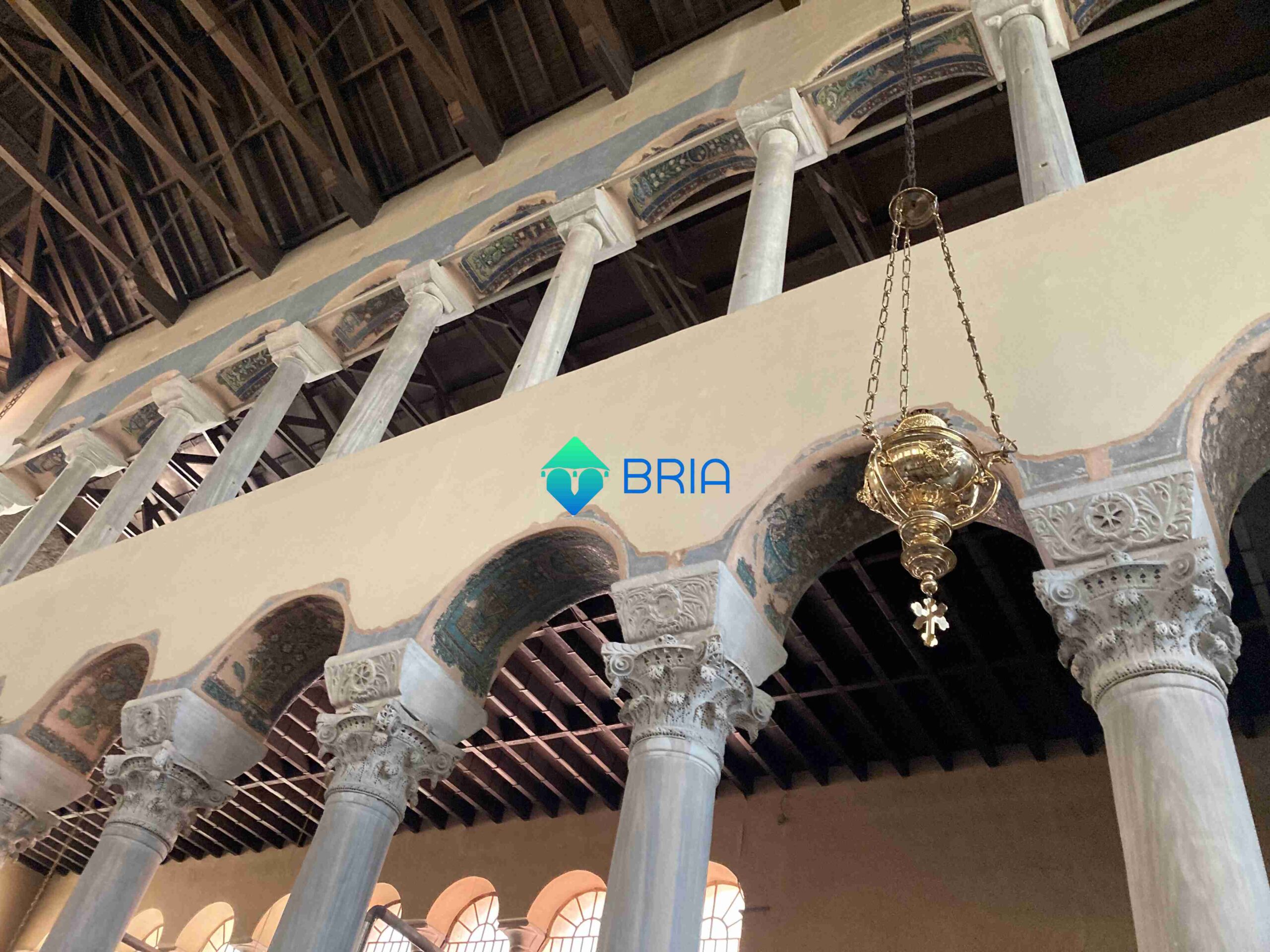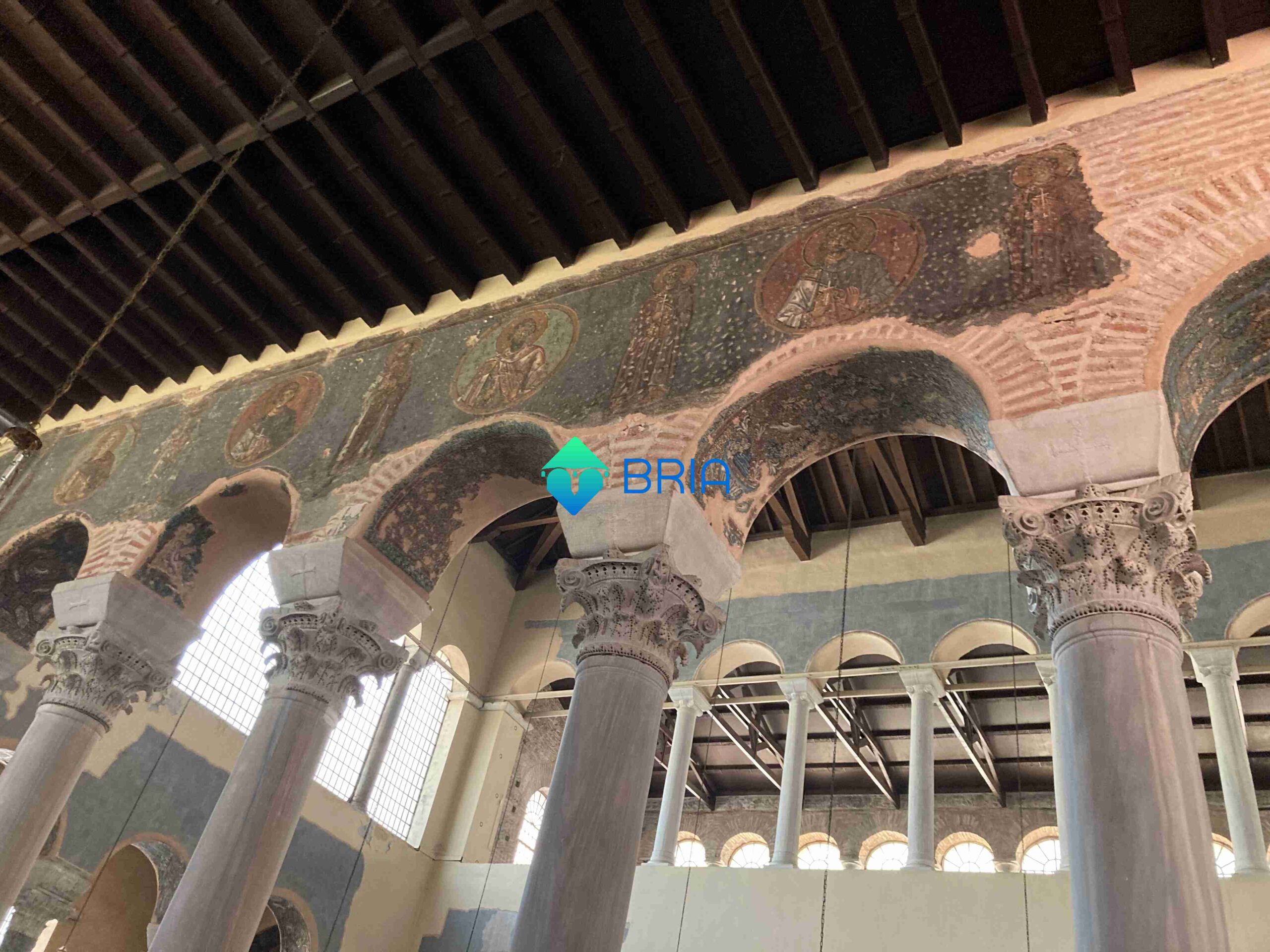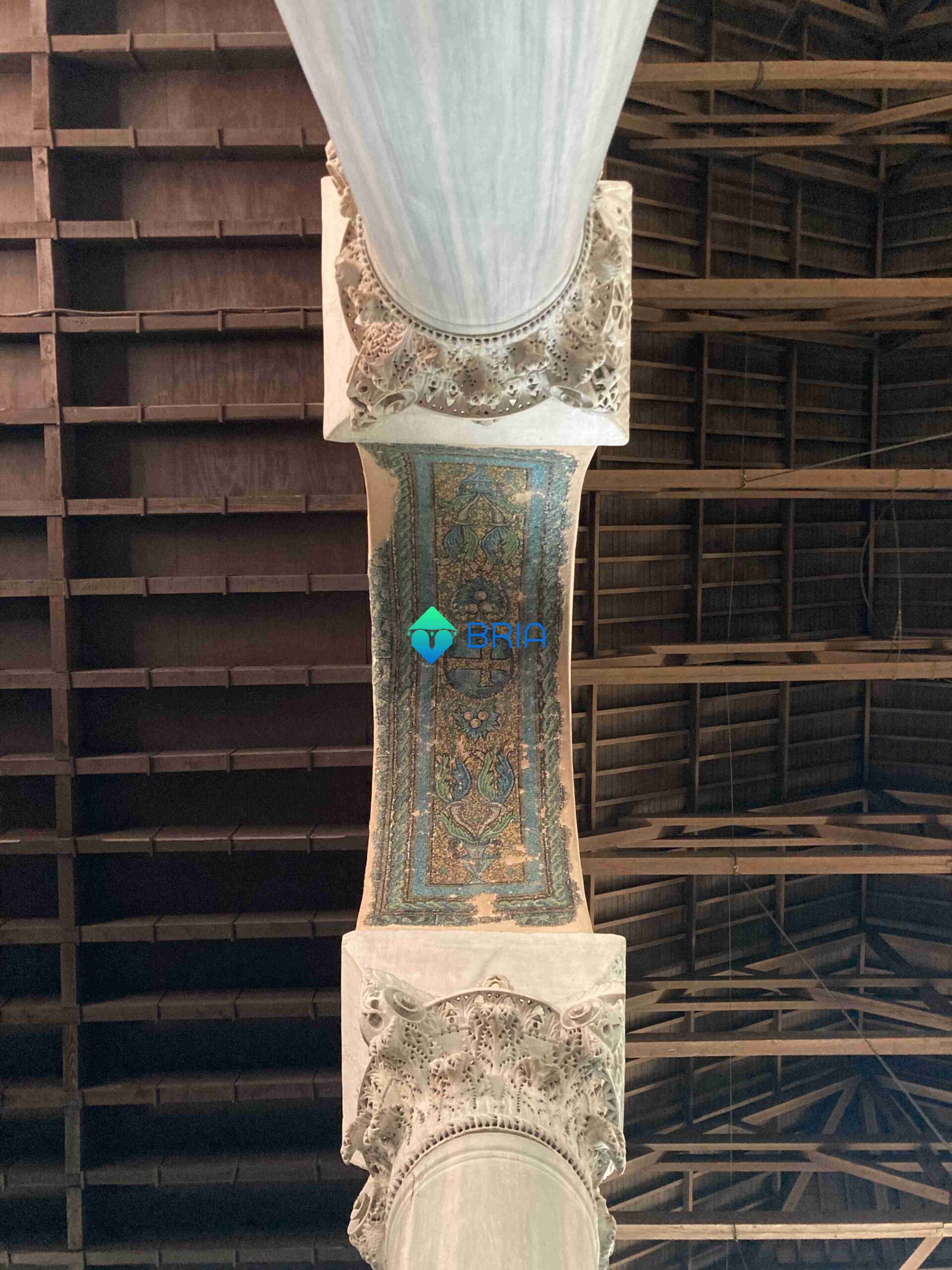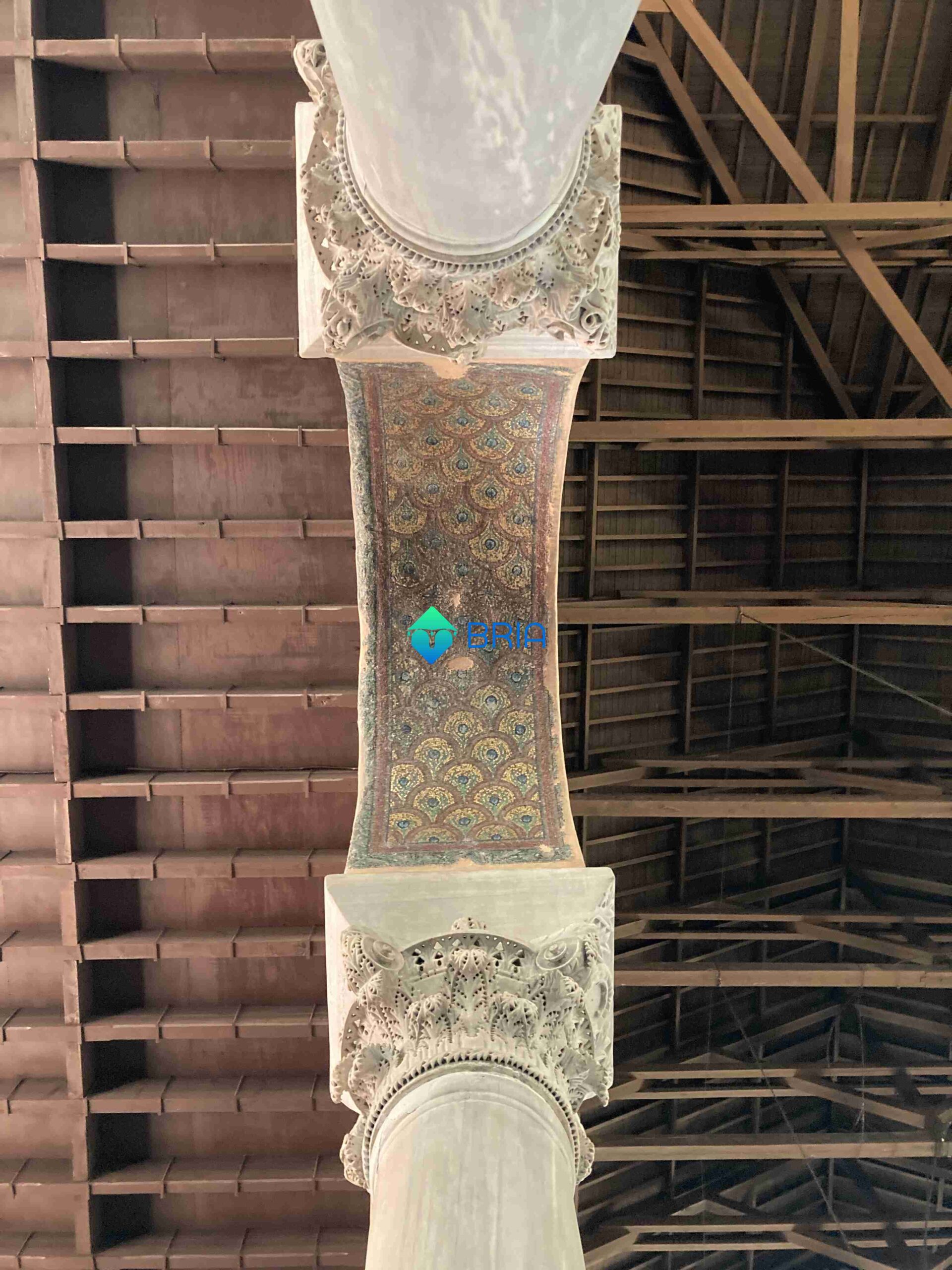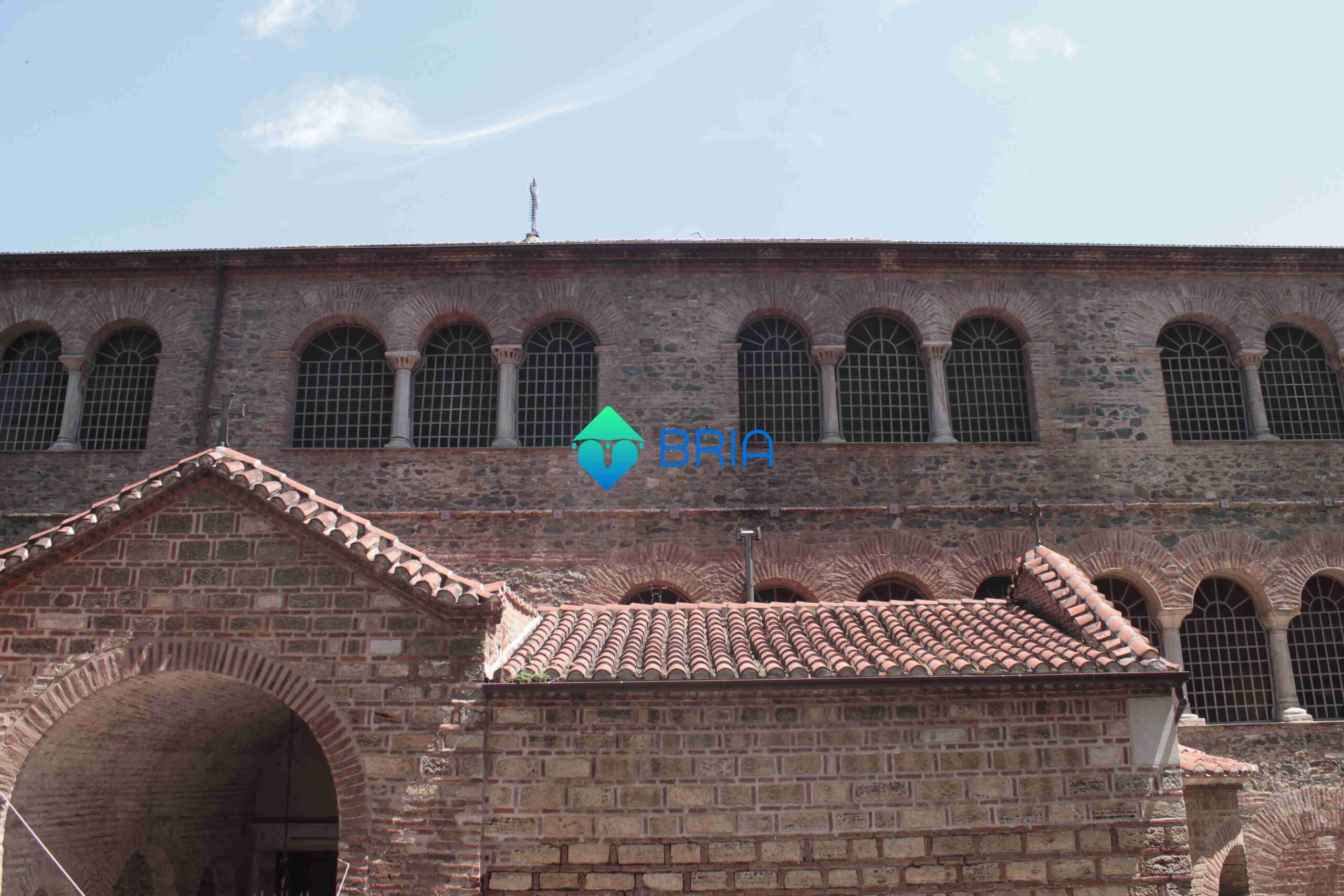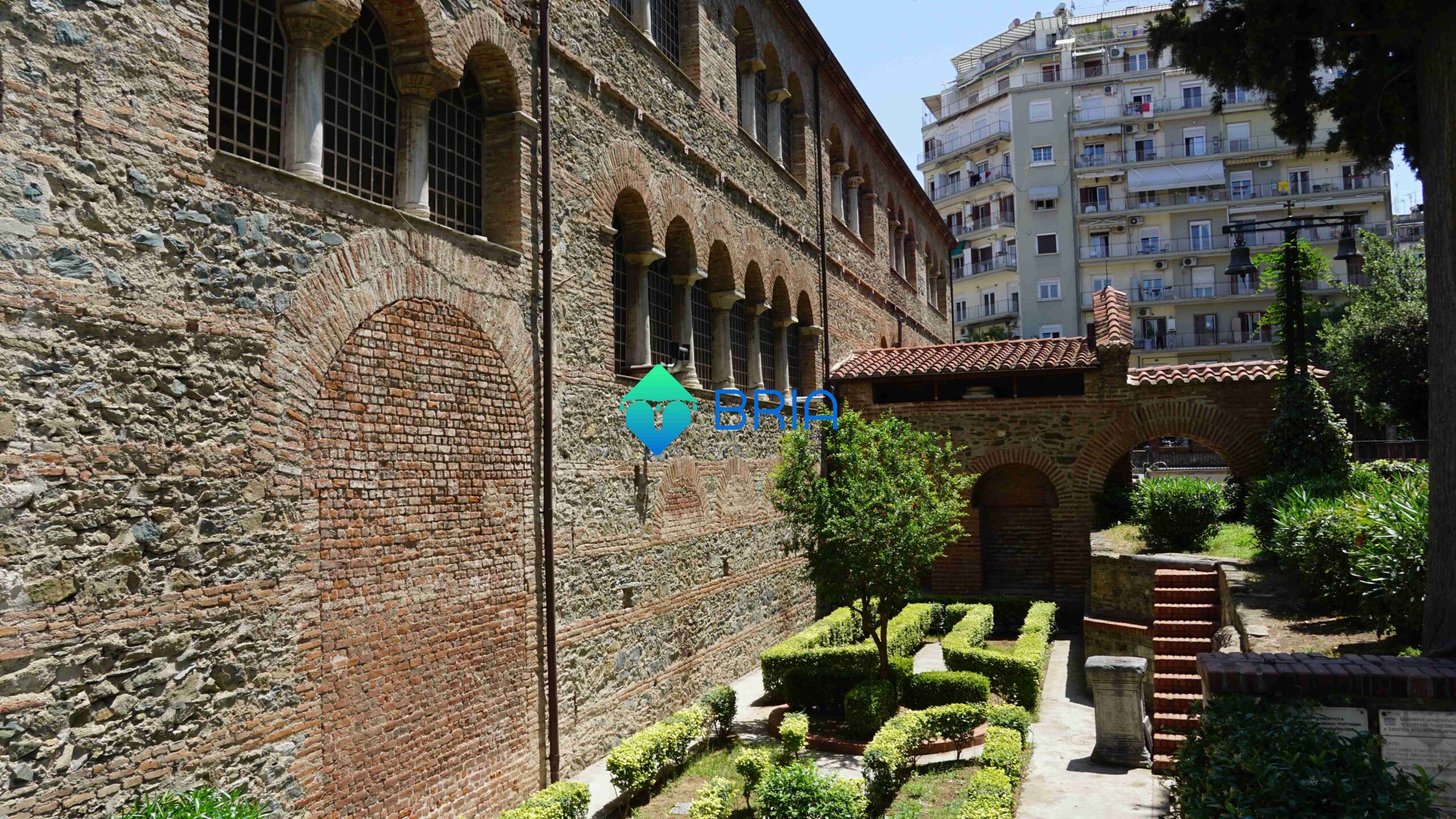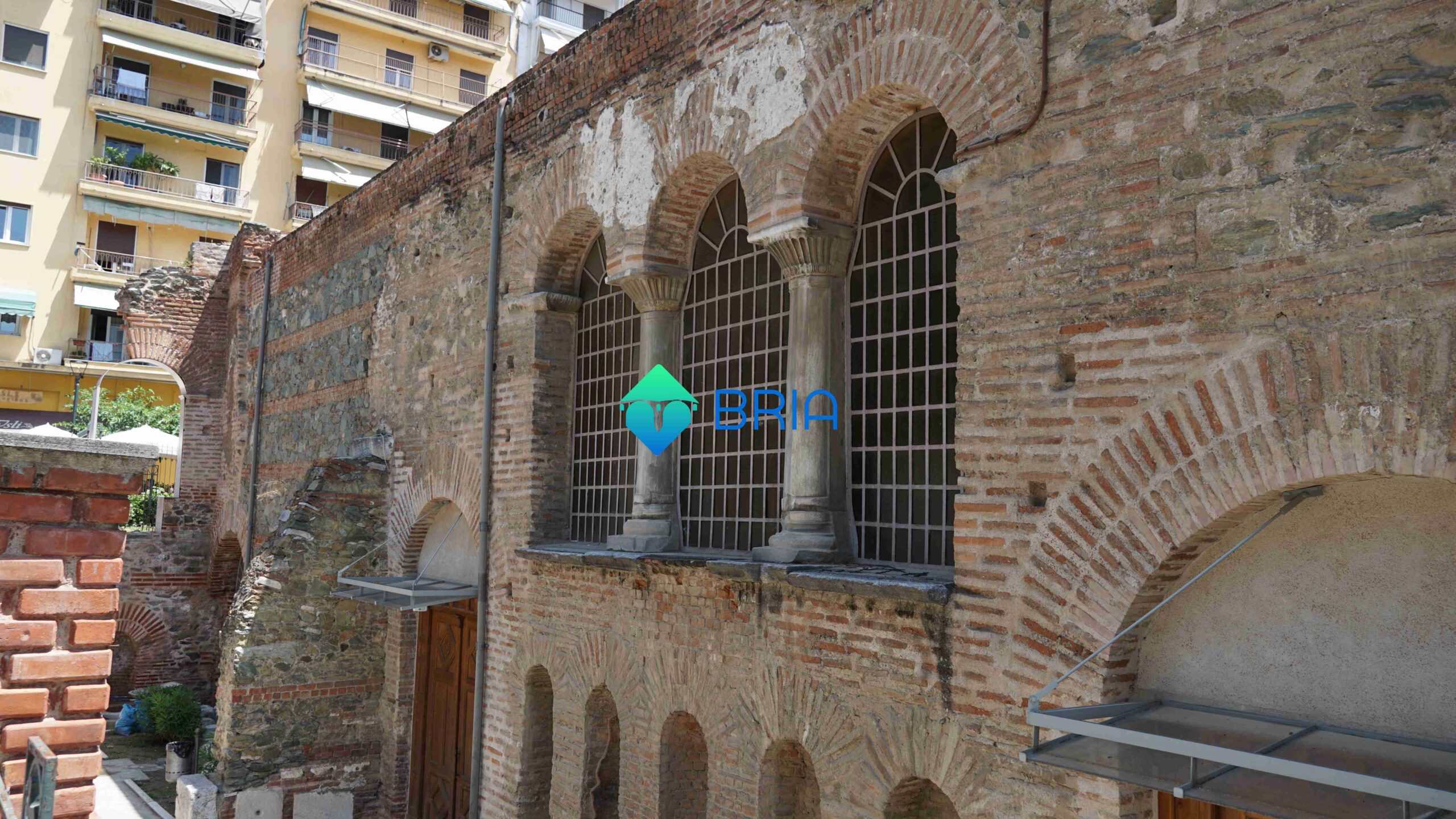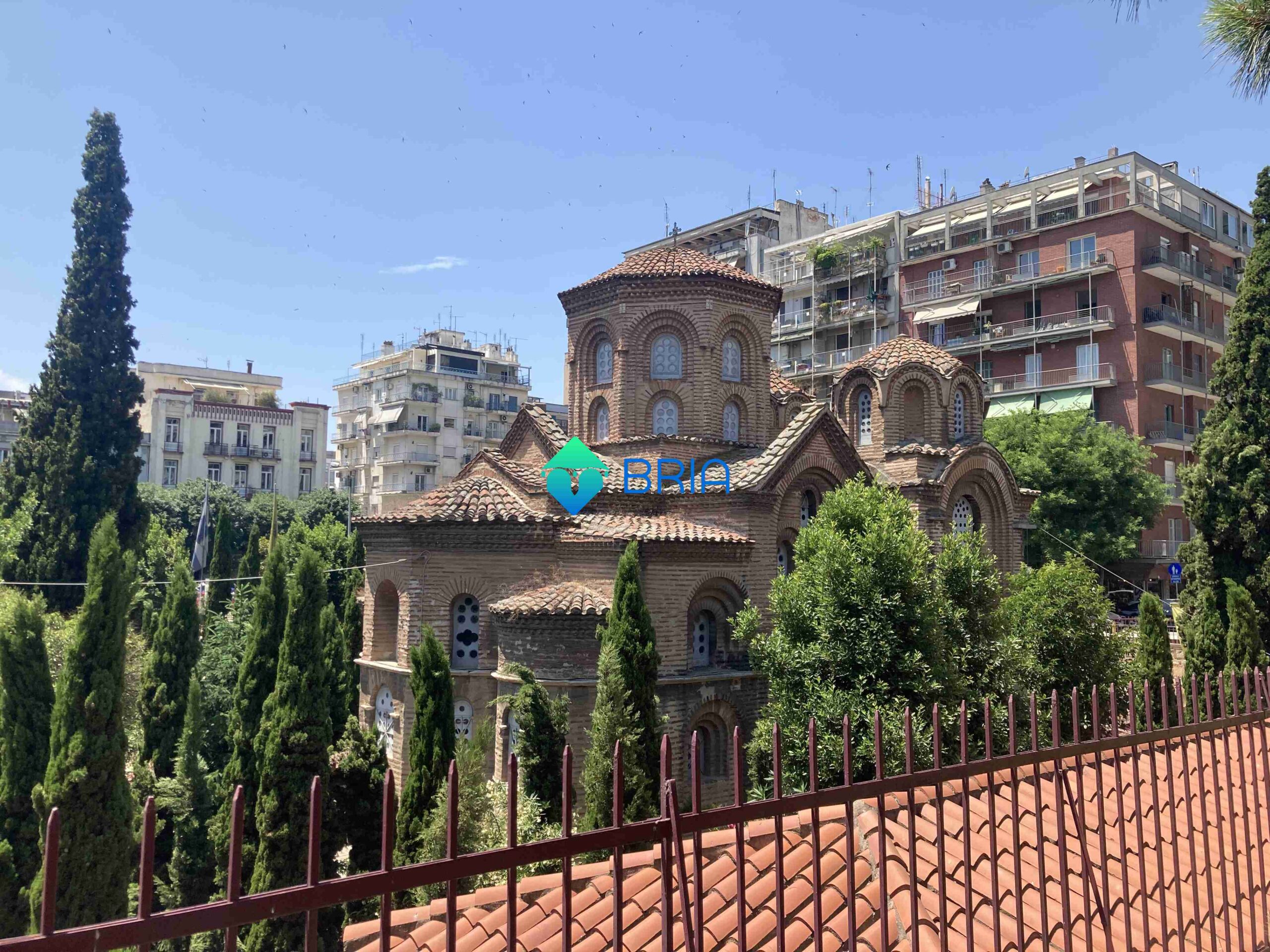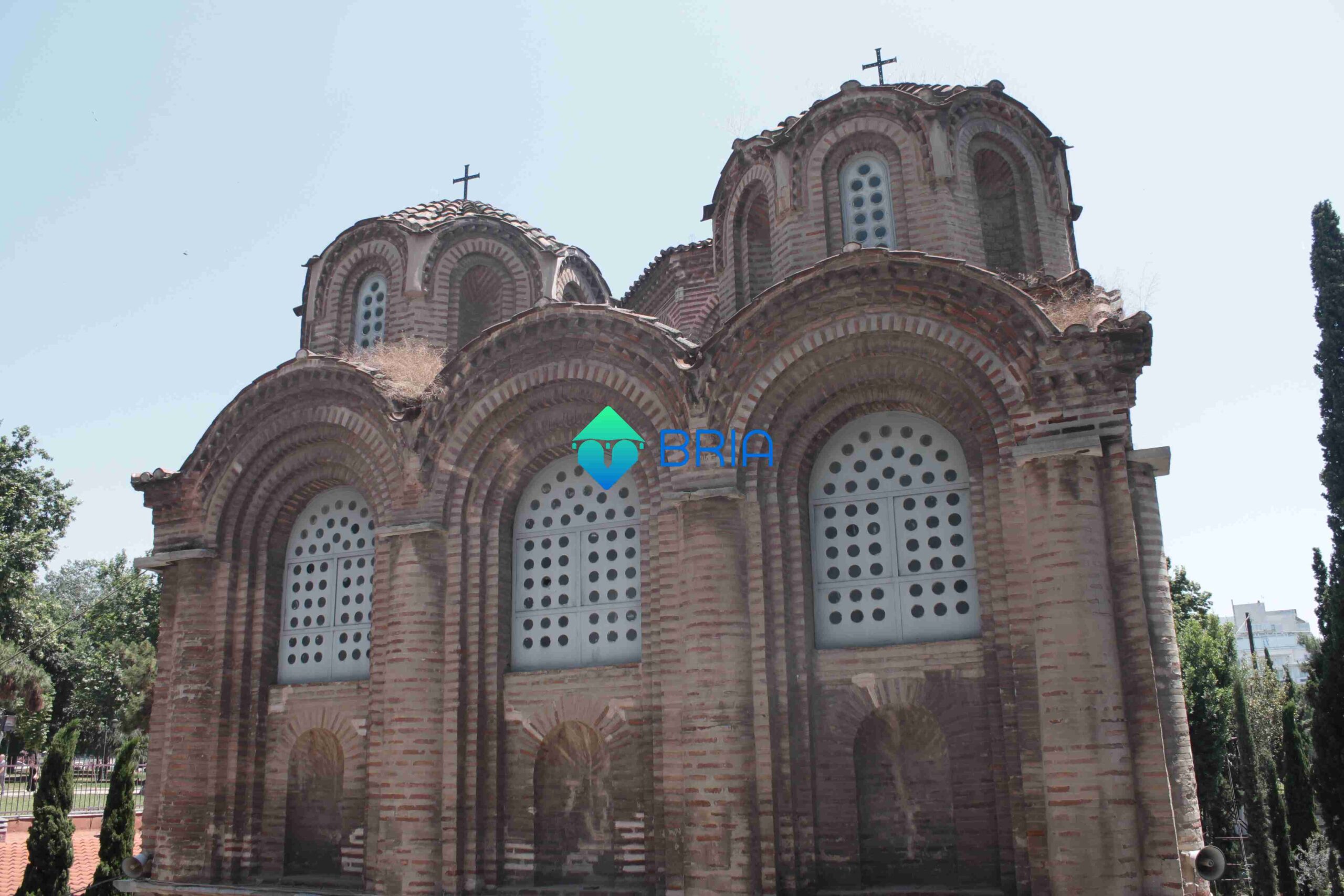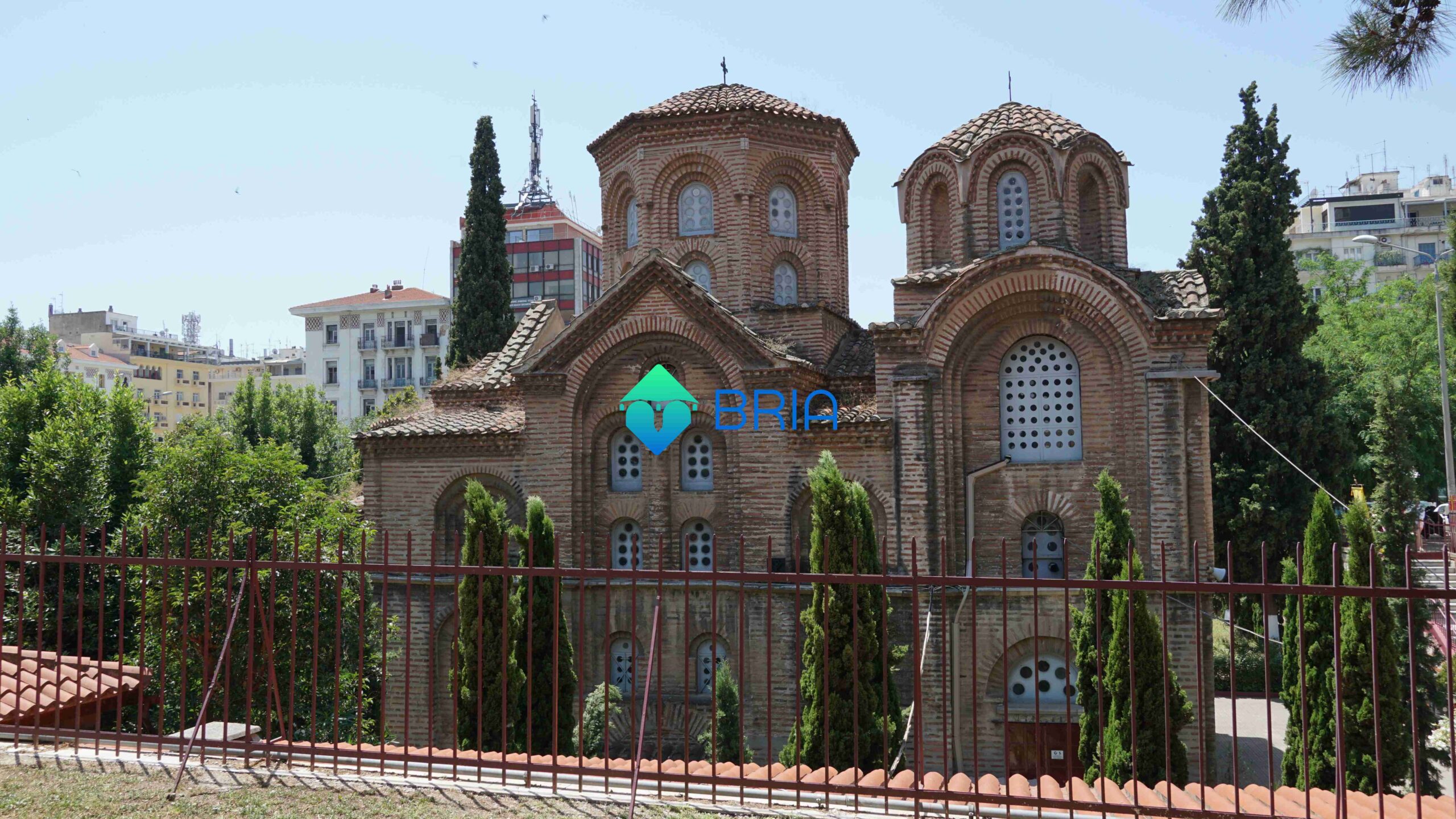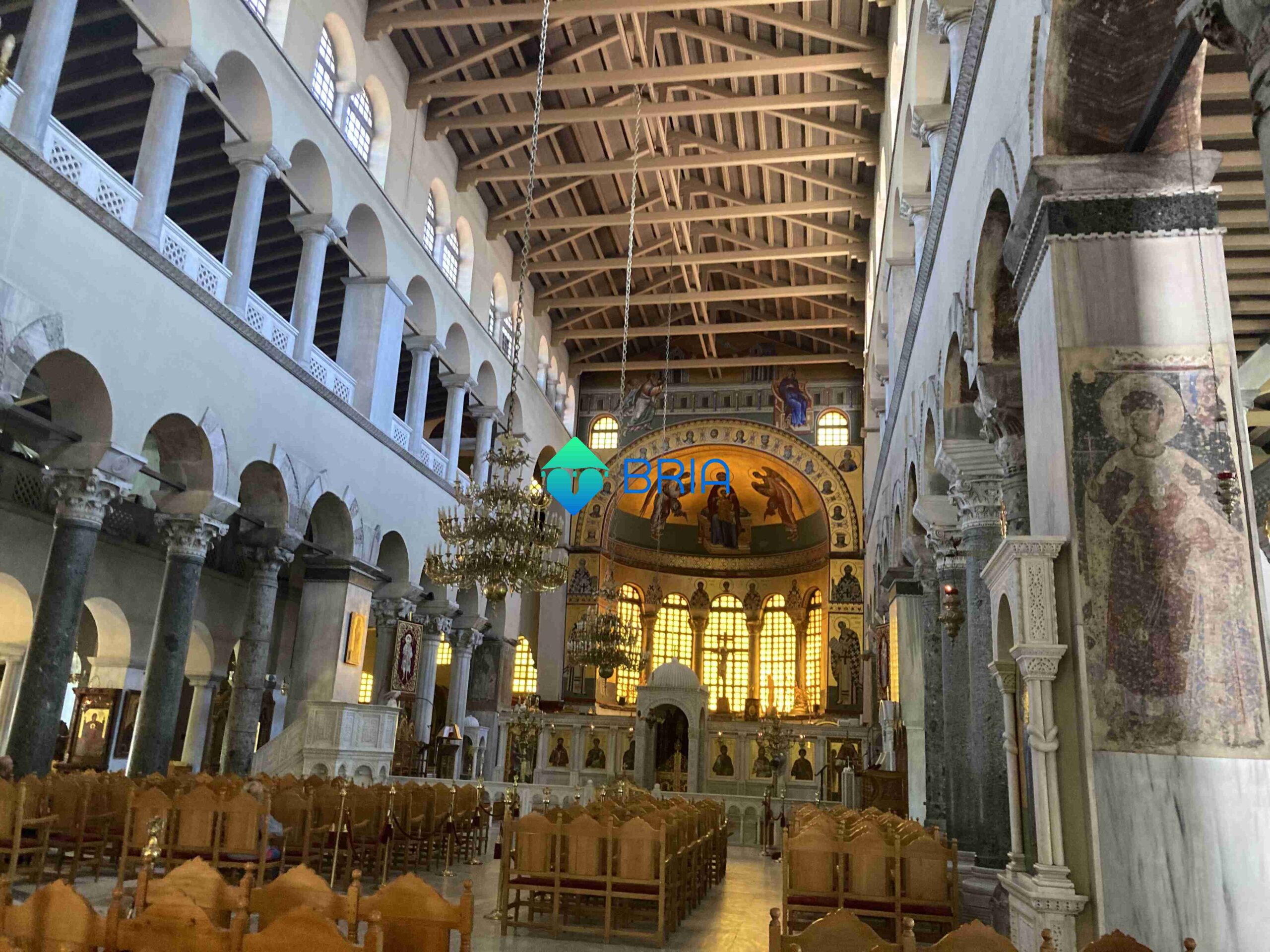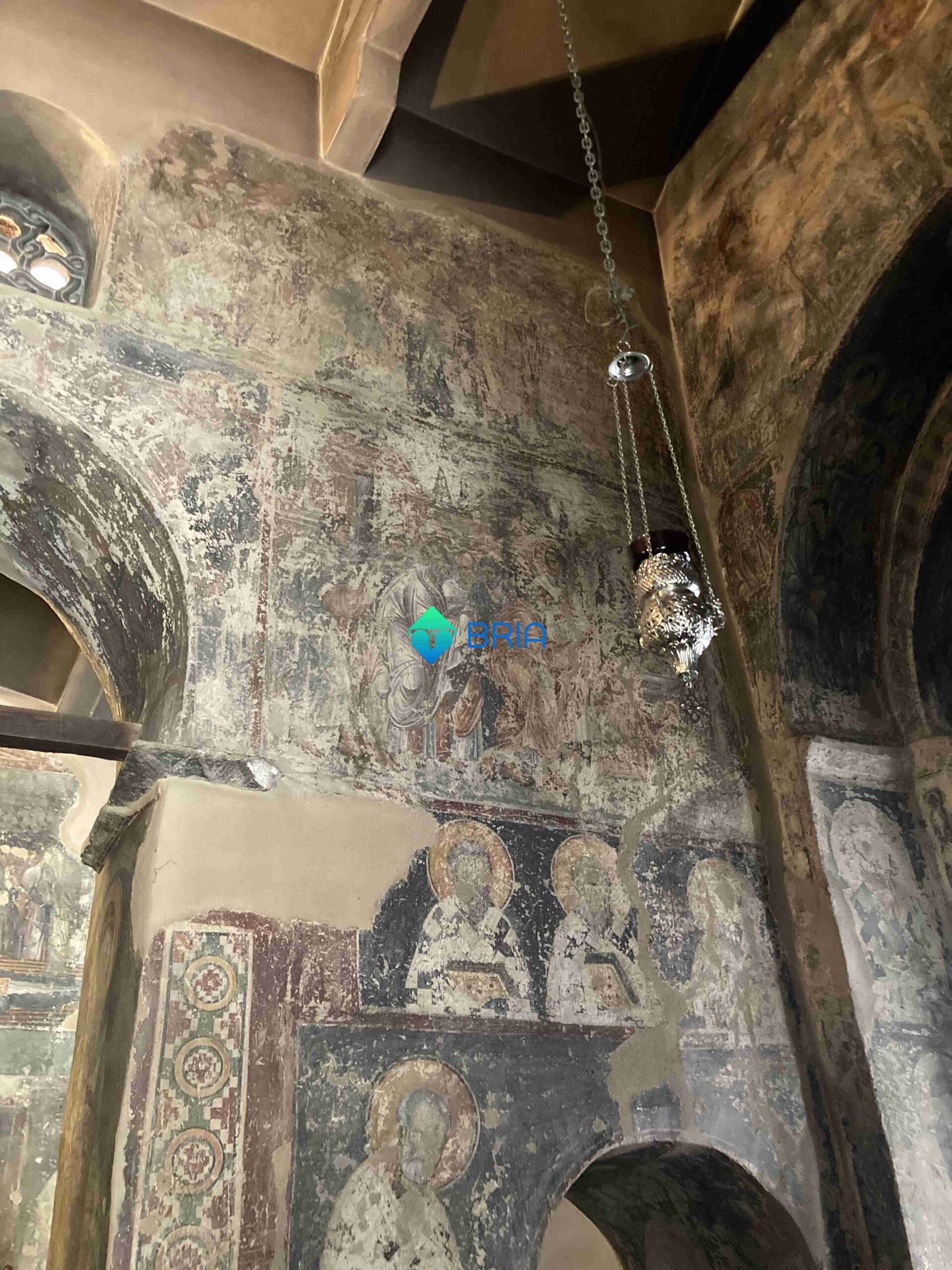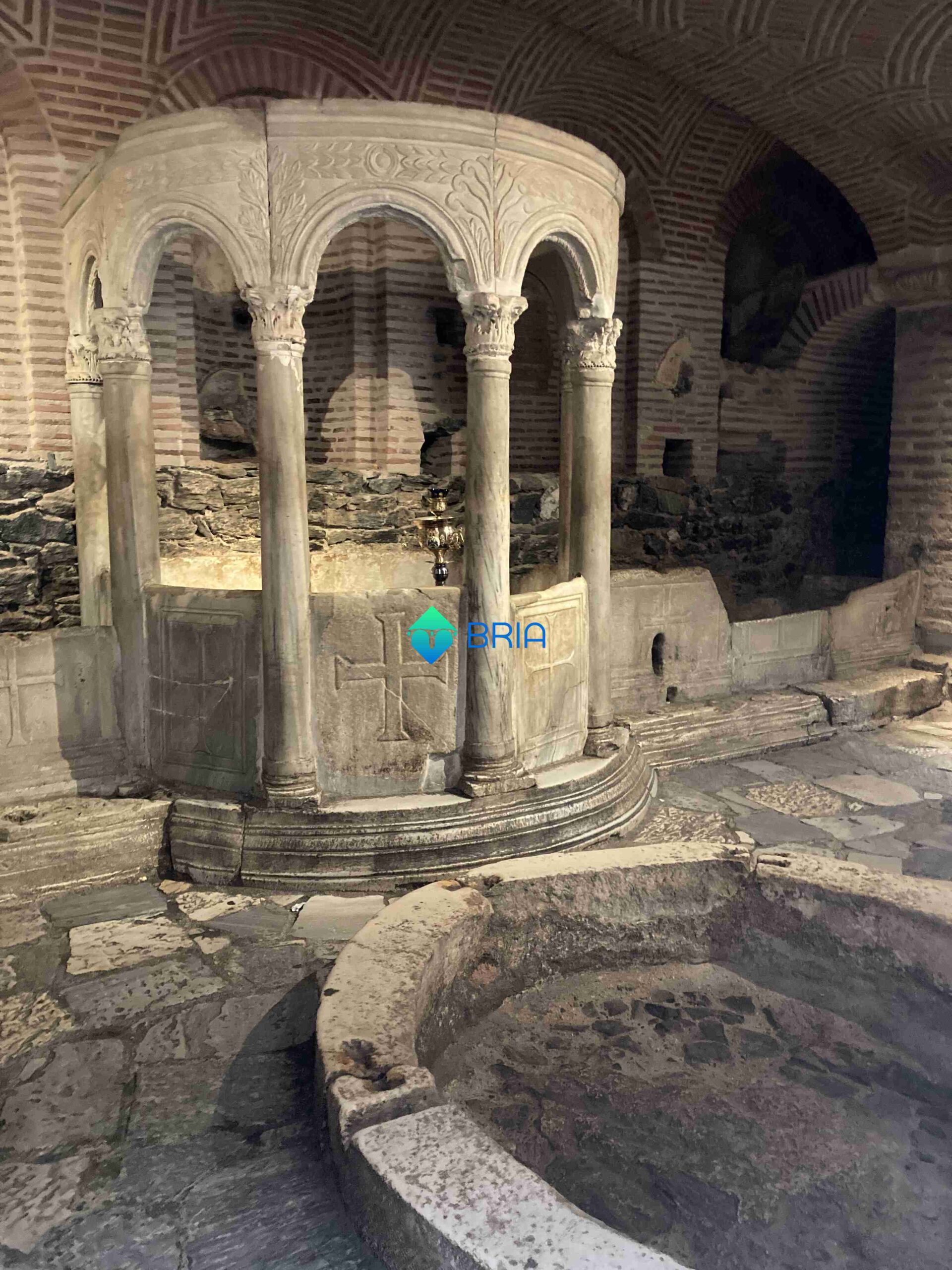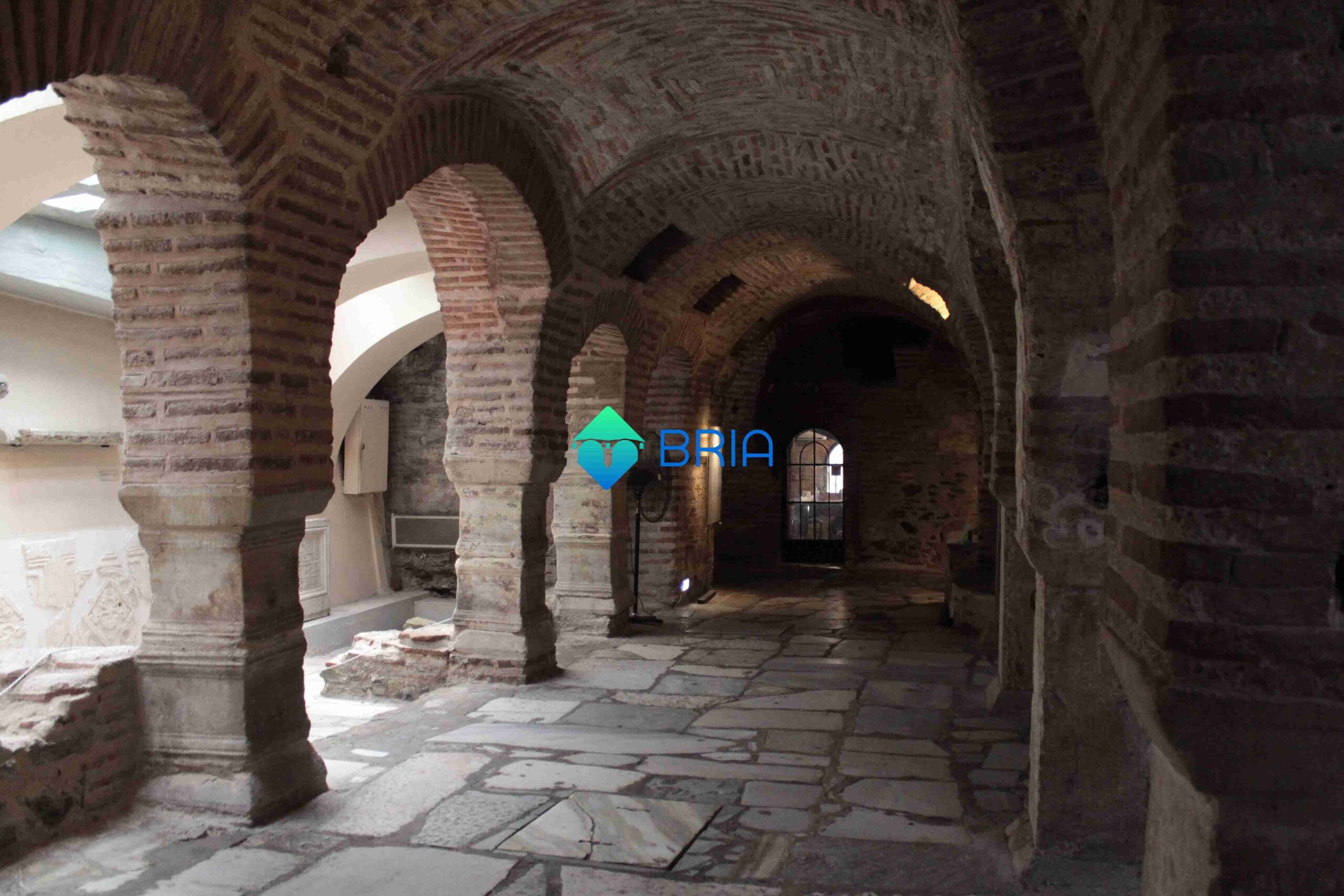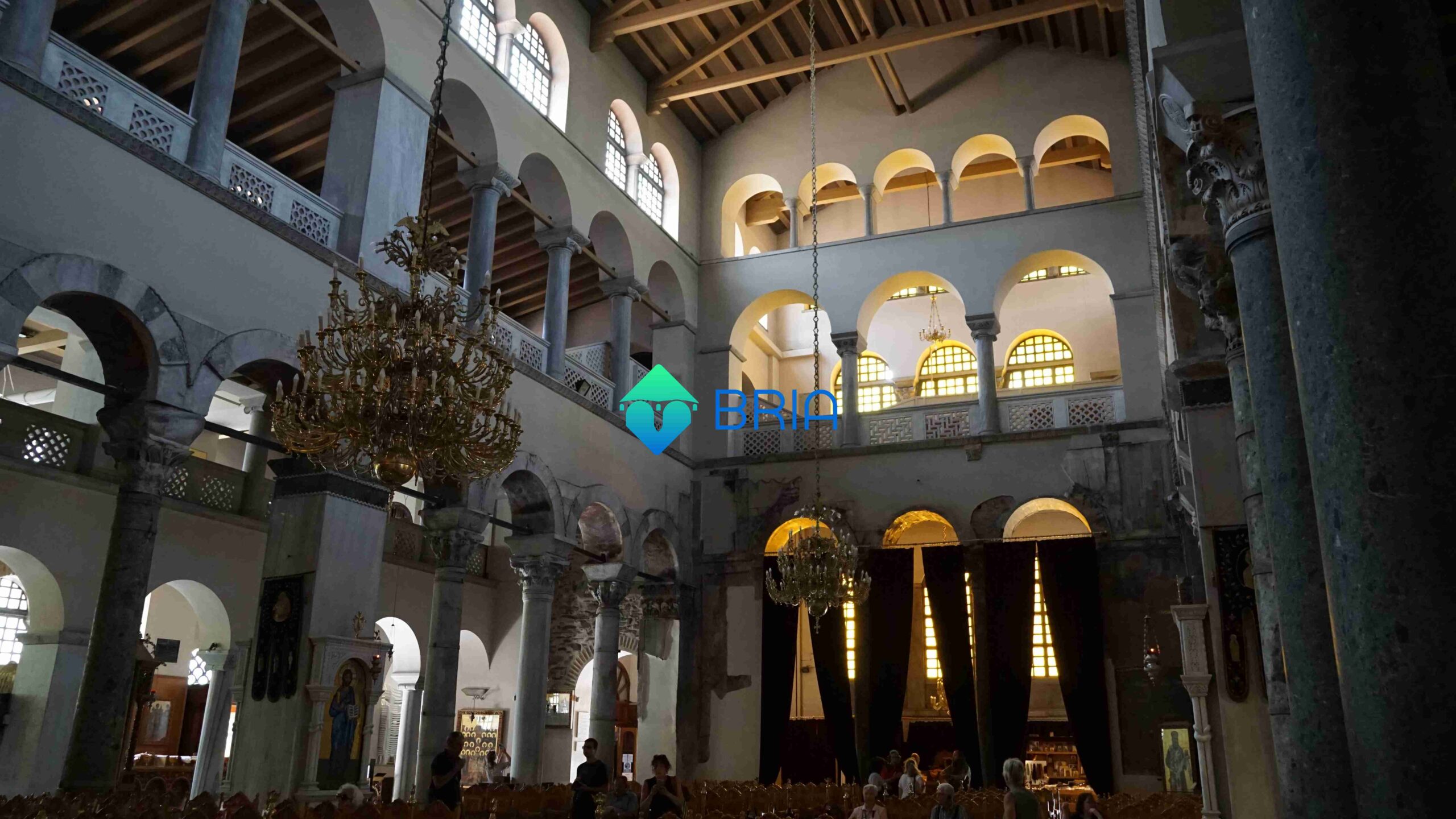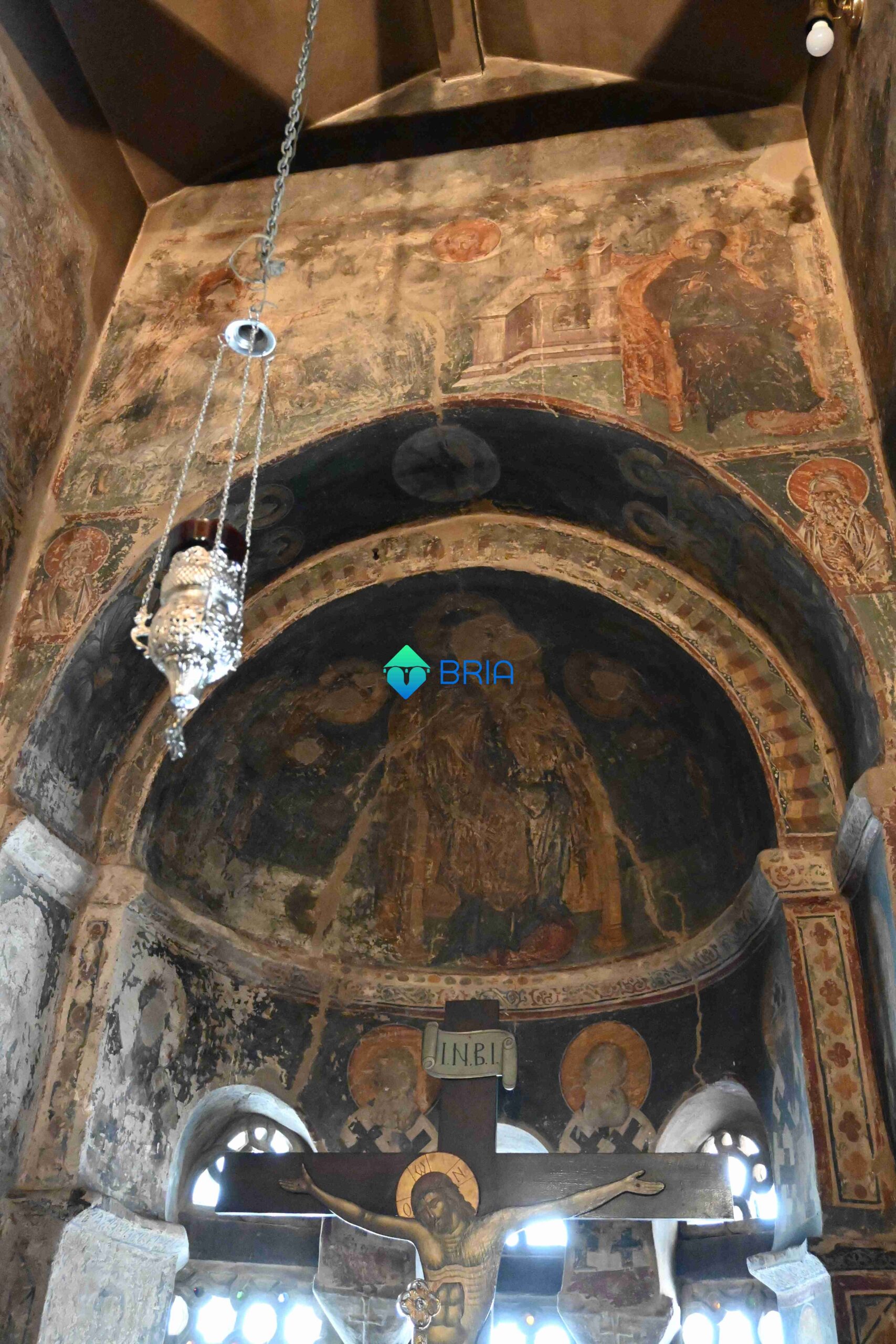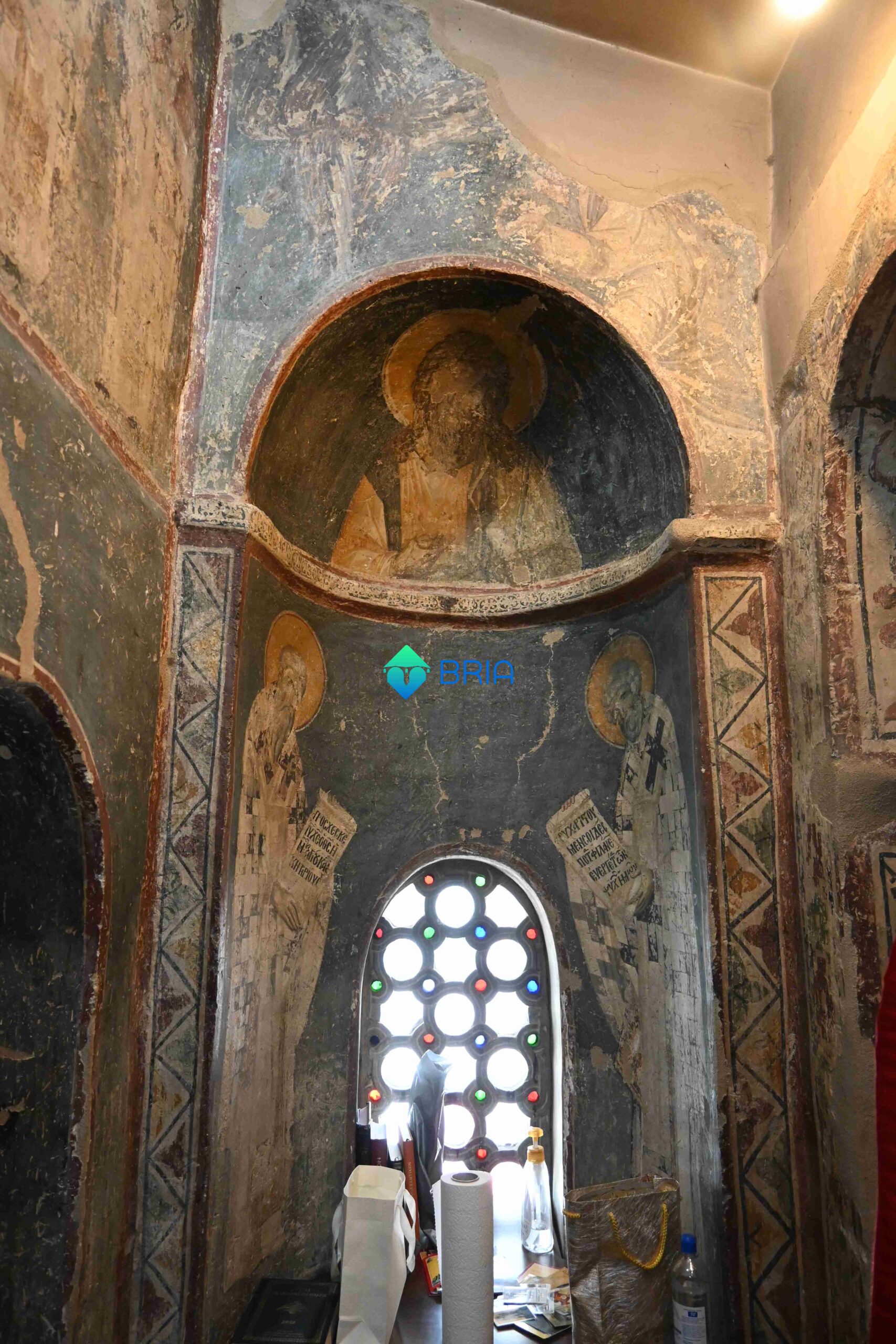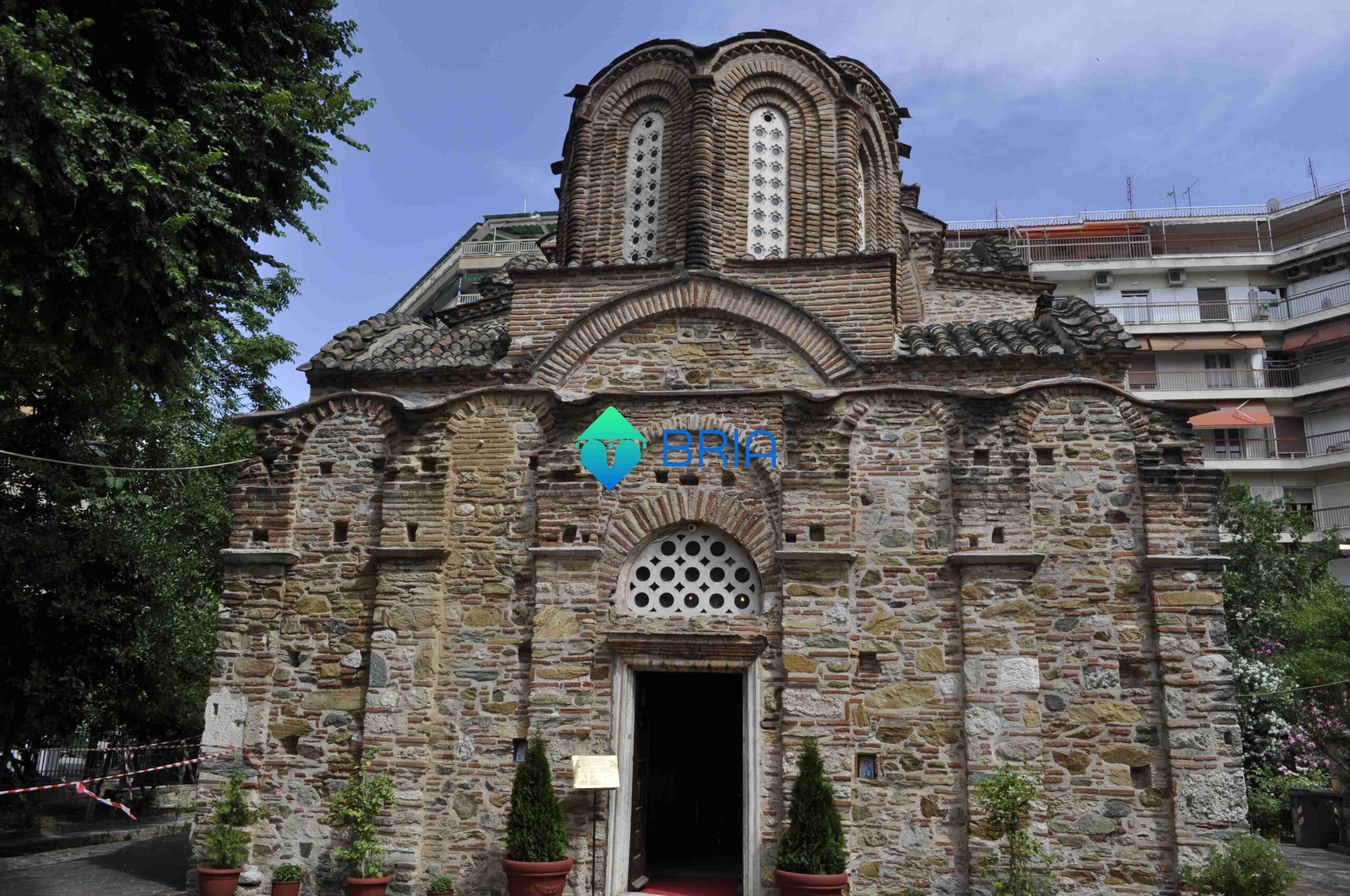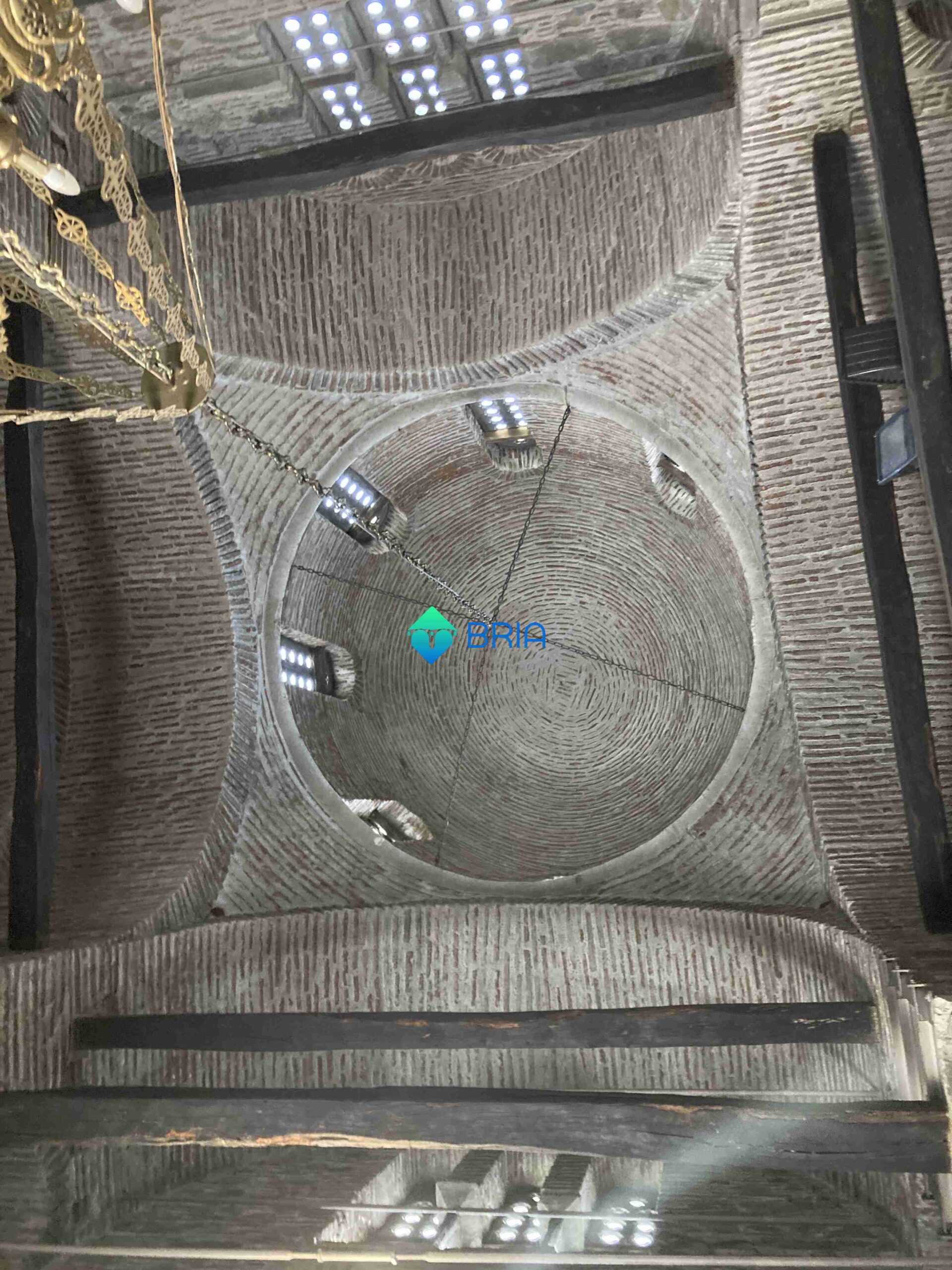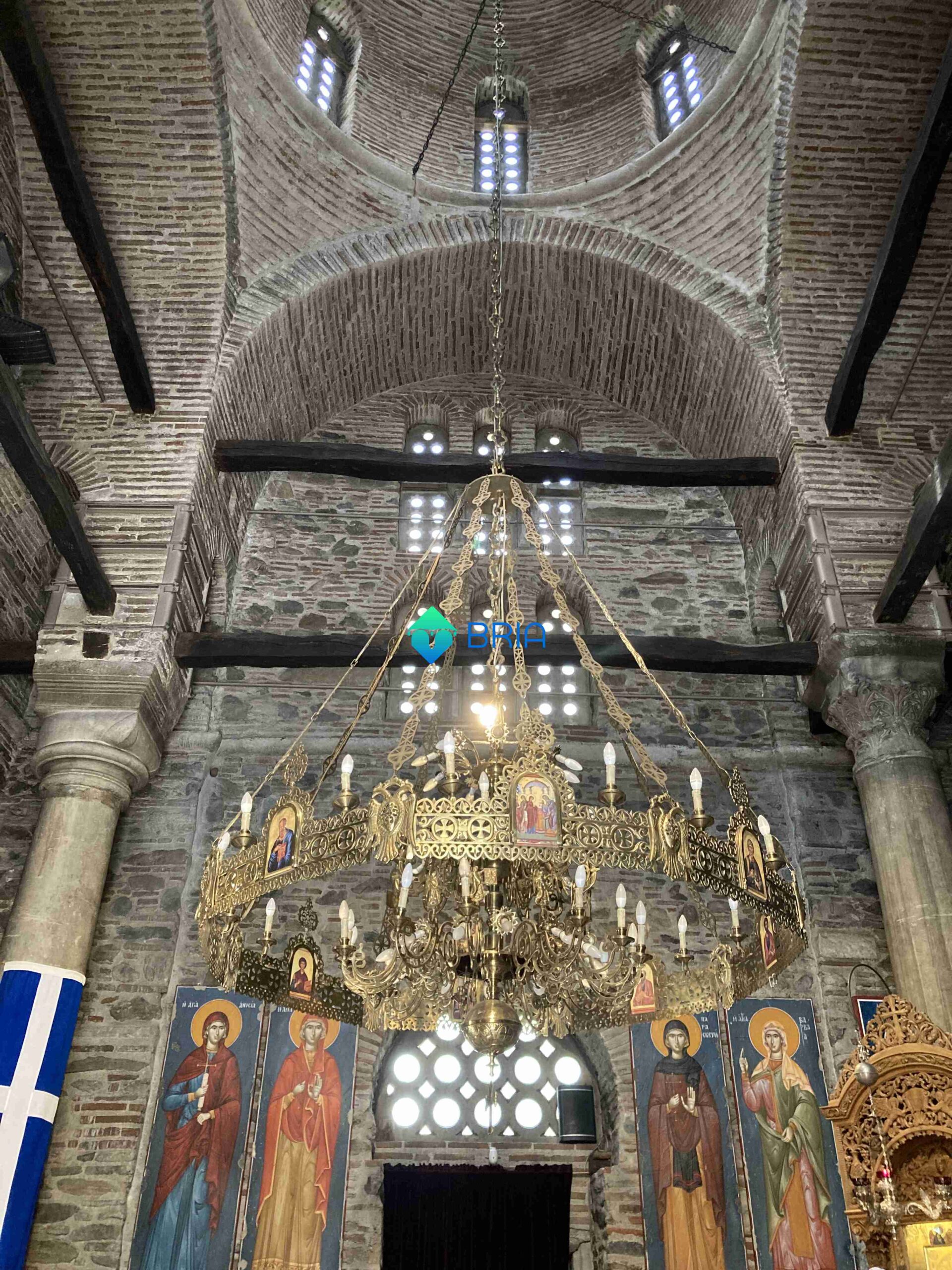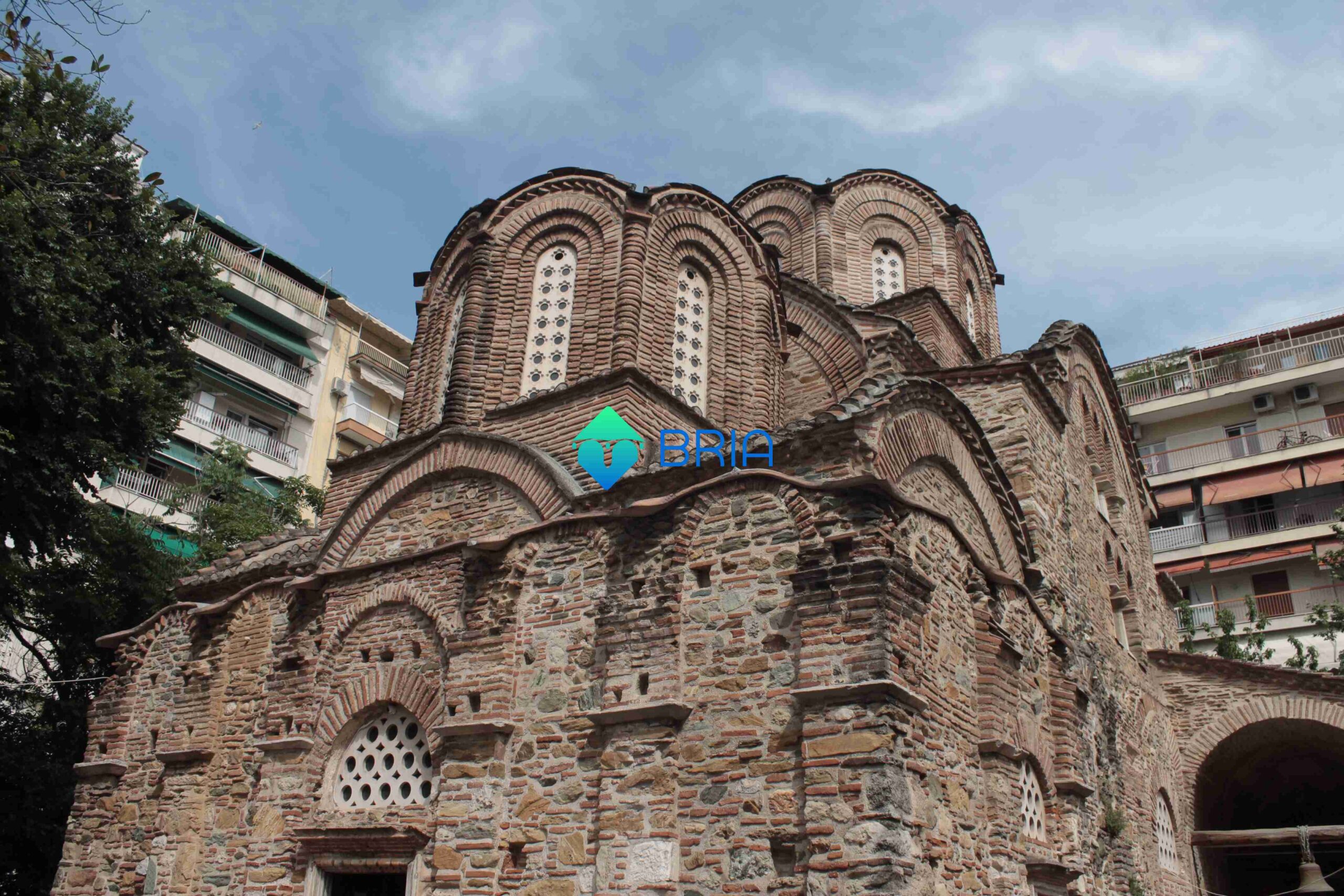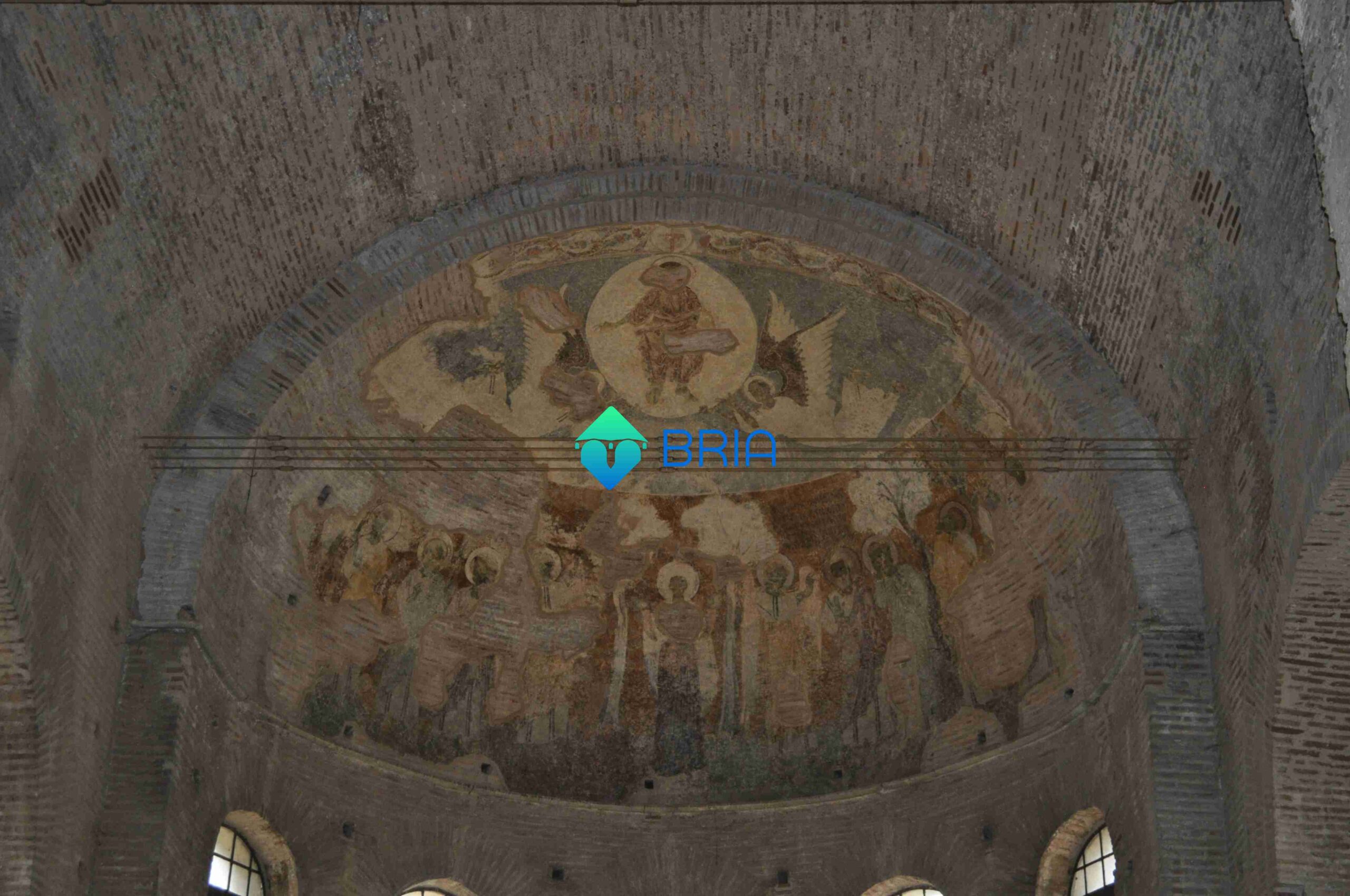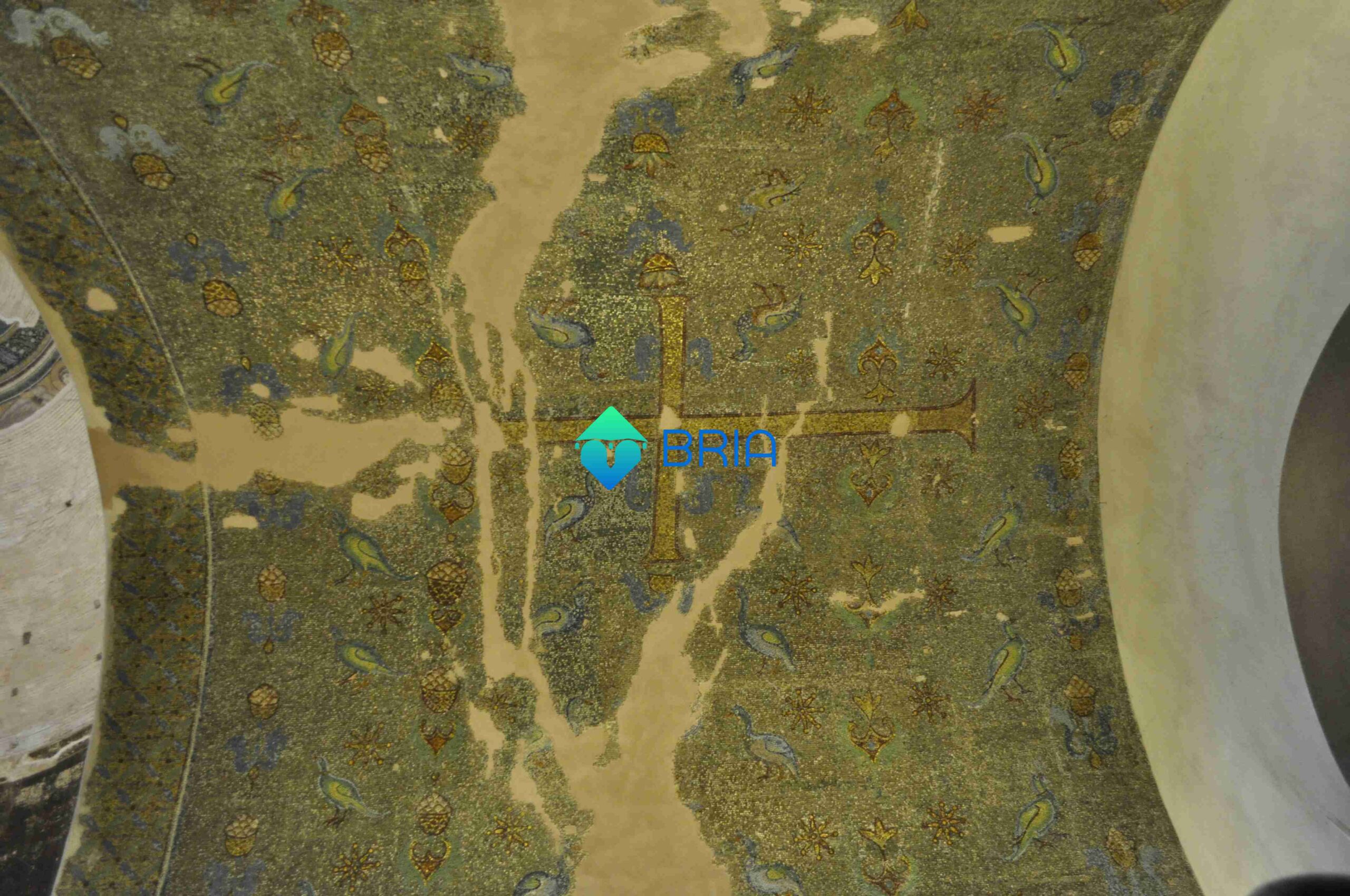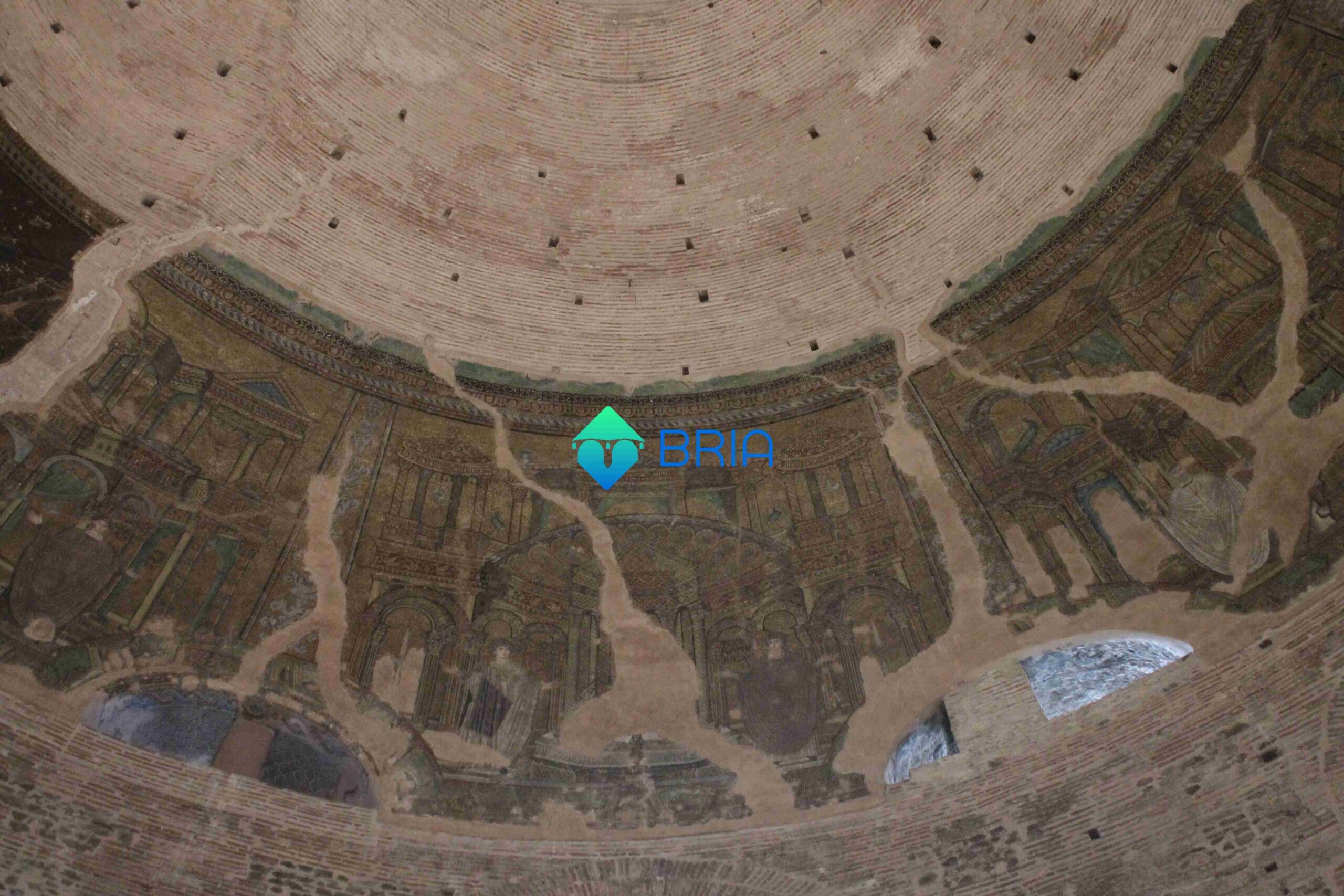Church of Hagia Sophia of Thessaloniki
Hagia Sophia Thessaloniki, standing in the place of an older, five-aisled basilica, is a cross-domed basilica of the transitional period. The imposing composition of the Ascension, typical for the domes of the city, dates to the 9th century. The apse mosaic, an enthroned Virgin Mary with Christ dates to the 11th century, although traces of an earlier cross still survive. The traces of the cross along with inscriptions mentioning an emperor Constantine an empress Eirini as well as the metropolitan Theophilos have led to the dating of the original composition of the apse and the vault of the Sanctuary to the 8th century.
Church of the Virgin Mary Acheiropoietos
The original construction of the church, a basilica with a tripartite narthex in the west, dates back to the 5th century. It was built on the site of a Roman bath, traces of which can be seen on the north aisle of the present building. A second important alteration, which possibly included the addition of the second floor has been dated to the 7th century while a third can be attributed to the 14th. The floor of the church, made of proconnesian marbles, the capitals fine examples of Constantinopolitan style, as well as the columns of the aisles and tribelon survive almost intact.
Church of Panagia Chalkeon
The church belongs to the cross in square type and is strongly influenced by the Constantinopolitan architecture of the middle Byzantine centuries, both in style and construction methods. A donor’s inscription in the lintel above the main entrance, mentioning Christophoros Protospatharios with his wife and daughters, dates the building to 1028. A few Christological scenes are preserved in the nave (Nativity, Presentation to the Temple, Adoration of the Magi, Pentecost) and liturgical scenes in the sanctuary. In the narthex an extensive Second Coming is developed. In the Palaiologan era several scenes were added, most notably those of the Akathist Hymn.
Church of St. Demetrios
The church is a five-aisled basilica, with a narthex, a transept and a so-called crypt under it. According to tradition the first building on the site was a small oratory serving as a martyrium for the saint. In the 5th century, a certain eparch named Leontios founded a three-aisled basilica which was burnt down in 626-634. After the fire a the five-aisled basilica was erected and continued to transform (with additions like the chapel of Saint Euthymios in the SE corner, the galleries, its transformation to a mosque in 1493 and restoration of Christian worship in 1912) until the disastrous fire of 1917 that burnt it down almost the entirely.
Church of St. Panteleimon
St Panteleimon is a cross in square with an ambulatory (peristoon), a type common for the late Byzantine architecture of Thessaloniki. The church is often identified as the katholikon of a monastery dedicated to Virgin Perivleptos, known from the sources. Very few paintings survive in the lateral apses of the Sanctuary and the ambulatory chapels; amongst them, the most interesting is a depiction of St. James, the brother of God (Αδελφόθεος) which further supports the proposed dedication since the patron of the Perivleptos monastery is know to have been a certain James, metropolitan of Thessaloniki.
Rotunda
A centrally planned building whose construction, dedication and transformation still remain open to discussion. It has been proposed that it was built as an imperial mausoleum (either by Galerius or Constantine) and was later transformed into a Christian church. At some point the original structure was enveloped by a circular ambulatory and several other buildings around it (an eight-sided baptistery and a sixth-sided building later used for burials are still visible in the south). The building preserves impressive mosaics both in the main dome and in the barrel vaults of the original structure.


